
- Sails & Canvas
- Hull & Structure
- Maintenance
- Sailing Stories
- Sailing Tips
- Boat Reviews
- Book Reviews
- The Dogwatch
Select Page

Repowering, Part 1 – The Decisions
Posted by Don Launer | Engine , Projects

New engine or rebuild? And should you install it yourself?

On a cold February day, Don studies his engine replacement information. Delphinus rests outside awaiting her new engine.
Chances are your boat is like a member of the family. You could no more dispose of it than sell your only child. But, inevitably, the day arrives when you realize that your power plant is on its last legs, and there are some important decisions to be made.
Some boatowners go to the boatyard, write a check, and say effortlessly, “Call me when it’s ready.” For most of us, however, it’s a traumatic moment. After all, repowering an inboard auxiliary sailboat is a lot more involved than simply dropping a new outboard onto the transom.
For diesel engines, the symptoms begin to develop years before things become critical. Whereas your brand-new diesel would start within the first turn, now the cranking takes longer — and, if the weather is cold, much longer.
When Rudolf Diesel first patented his engine in 1892, it was a revolutionary idea. His engine used the principle of auto-ignition of the fuel. This idea, based on the work of English scientist Robert Boyle (1627-91), was that you could ignite the fuel from the heat produced by compressing the air in the cylinder. If this compression were great enough, the temperature in the cylinder could be raised enough to ignite the fuel-and-air mixture. In modern diesel engines, this compression ratio is between 14:1 and 25:1, which raises the temperature of the air in the cylinder to well above the burning point of the diesel oil that is injected into the cylinder (about 1,000 degrees F).
Compression, then, is the key to a successfully operating diesel. But when a diesel is up in years, cylinder walls and piston rings are worn and fouled with deposits, so they no longer make a good seal. Valves and valve-seats have also become pitted and fouled and don’t seal properly. Thus, it becomes much more difficult to get the compression necessary for ignition, especially when the engine block is very cold and rapidly saps away the heat of compression.
Biting the bullet

Discussing the proposed engine replacement with Tom Dittamo of Harbor Marine Engines.
When the day finally arrives for you to bite the bullet, there are two options: get the engine rebuilt or buy a new one. If the horsepower of the old engine was perfect, if it pushed you through heavy winds and waves when they were right on the nose, and if that engine has always been freshwater-cooled and has not had other serious problems, rebuilding that old engine might be more compelling. Certainly it would be less expensive.
But if your present engine is very old and has had raw saltwater cooling, chances are that having it rebuilt will not be practical. There will be rust, frozen bolts, parts to replace, and probably great difficulty in getting those parts. Even though the cost of rebuilding an old engine is typically about half that of a new engine, you may very well be throwing money away on a rebuilding venture. And if you have always felt that you could use just a few more horsepower to get you through those nasty conditions, now is a good time to upgrade.
Remember that when you decide to go with a new engine there are many more costs involved than just the price of the engine itself. Engines today, which provide the same horsepower as your old engine, are usually lighter and smaller and rotate at higher speeds.
These smaller dimensions in width, height, and length make it almost certain that your engine bed will have to be rebuilt to accommodate the smaller engine, since its mounts will probably be closer together.
It’s also important to know the type of transmission on your new engine. Basically, there are three different types:
- Parallel is a transmission whose propeller-shaft coupler is in line with, or parallel to, the engine’s crankshaft.
- Angle-Drive is a transmission whose coupler is at a downward angle to the crankshaft.
- V-Drive is a version in which the transmission is forward of the engine and makes a V-turn to drive a propeller shaft leading aft.

The new Yanmar 3GM30F is delivered early, which gives Don adequate time in which to measure it and familiarize himself with it.
Each of these configurations presents its own problems when rebuilding the engine bed. The smaller fore-and-aft dimensions will probably also mean that you’ll need a new and longer prop shaft unless you can set the new engine farther aft on the beds. Having a new shaft is probably a good idea anyway. After the old engine has been removed and the old shaft has been slid out of its stuffing box, you’ll probably see rings of wear in the shaft where the stuffing box (and sediment) have created grooves. If your old shaft is more than a decade old, you’ll probably find that the flange coupling is so frozen onto the shaft with rust that it’s impossible to free it without further ruining the shaft.
Also, if you didn’t previously have a flexible coupling or Drivesaver, now is a good time to add this item, which will help protect your new transmission in the event of the propeller picking up a piece of wood or a heavy line. If you’re already using a flexible coupling between the engine and the shaft, chances are that the bolt holes in this flexible coupling or Drivesaver will not match your new engine’s coupler, and a new, matching, flexible coupling will have to be purchased.
As for the propeller, there’s a 50-50 chance that the new engine may rotate in the opposite direction from the old engine. (If your present engine turns the prop shaft counterclockwise in forward gear, as seen from the stern, you now have a left-hand prop. If the new engine has a clockwise rotation, you need a new prop.)
Even if the direction of rotation of the new and old engines is the same, chances are that the engine speed, the horsepower, and the transmission gear ratio of the new engine will be different from the old. This will probably mean a new propeller of different pitch, diameter, or number of blades, making your old prop obsolete.
Free consultation

Before and after: preparations for the installation of a smaller Beta Marine engine in a C&C 30 required a new engine bed and oil drip pan to be constructed. This boat began life with an Atomic 4 which was later replaced by a Bukh and finally the Beta.
Most engine installation manuals give charts showing the recommended prop for your particular displacement and hull configuration, and most propeller manufacturers provide a free consultation service to determine the type of new prop you’ll need when repowering. Michigan Propellers, for instance, has a Pleasure Boat Prop-it-Right Analysis Form, which will suggest the correct propeller for your new engine.

On some boats, the engine and propeller shaft are deliberately installed at a slight angle off the fore-and-aft centerline of the boat. This may have been done to offset the tendency of a single engine to push the stern to one side or the other or to allow the shaft and prop to be removed without removing the rudder. If your boat has an offset driveshaft, repowering with an engine whose shaft rotates in the same direction as the old engine may be preferable. ( We have an offset shaft on our C&C 30. We repowered with opposite rotation and are satisfied with the outcome. It seems like this should have mattered more than it did. —Ed. )
The smaller proportions of a new engine and the rebuilding of the engine bed will also mean that your present oil drip pan beneath the engine will no longer fit, and a new pan will have to be fabricated and installed.
There is one complication of a physically smaller engine that may be overlooked. If you’ll be using your engine to supply hot water through a heat exchanger, the water connections on the new engine might well be lower than on the previous engine. If the heat-exchanger water lines from the engine to the hot water tank slope upward, an air-lock can develop in the heat-exchanger coil in the hot water tank that will prevent water flow and, consequently, heat exchange. One way to overcome this problem is by installing an expansion tank at the highest point in the water lines at the hot water tank. The pressure cap on this tank should match that of the one on the engine, and filling the water system can be done through the filler cap of the new tank.
Fuel-return line
With diesel engines there’s another thing to consider. Some diesels had just one fuel line going from the tank to the engine. Most modern diesels, however, also require a fuel-return line from the engine to the tank (often called the overflow fuel line). Depending on an engine’s design, the amount of fuel returned to the tank via this line can vary greatly.
If you had an engine with a single fuel line, the chances are that you don’t have a fitting on top of the fuel tank(s) for this new fuel-return line. This problem can usually be solved by removing the current air-vent fitting at the top of the fuel tank and substituting a T-fitting. One side of this T can then still be used for the air vent while the other side can be used for the fuel-return line. This problem also will be encountered when changing from a gasoline engine to diesel.
It’s also likely that with a new engine, the water, fuel, and exhaust systems may have to be rebuilt or re-sized. Even if this isn’t the case, when the old engine is removed is a good time to replace those old hoses.
If you are considering selling your boat within the next few years, it might be tempting to believe the value will increase enough to offset the money you have put into a new engine and its installation. But although a boat will be worth more with a new engine, the increase in value will probably not equal your investment when you sell your boat. The same caveat is true if you convert from gas to diesel. But here we are discussing repowering your boat because you want to use it for many more years, not with the idea of selling it.
Do it yourself?
Most owners will hand over the repowering project to a knowledgeable, qualified, and reputable installer. Still, it’s valuable to know the potential problems along the way. If you have decided to have the job done professionally, there are several preliminary steps to take:
- Only accept bids from installers who have actually examined your boat.
- Consider the reputation of the installer and the yard.
- Ask whether they have installed this type of engine before.
- Ask for references from owners of boats similar to yours who have had the same job done.
- Make sure that all associated work is specified on the proposal.
- Be sure that the final installation will conform to American Boat and Yacht Council (ABYC) standards.
Some boatowners will want to tackle the job themselves. If you do your own installation, there are much greater benefits than saving money. You will end up with an intimate knowledge of your new installation. This, alone, is a great incentive.
If you decide to do the job yourself, it’s still a good idea to have a professional in your corner, someone who is a dealer for your new engine or who has done engine installations, and whom you can trust, talk to, and order parts from. If you’re doing your own work, the closer the yard is to your home, the better. And if you don’t want to tackle the whole job yourself, you may elect to do just the engine rewiring, the exhaust system, the water system, or the fuel system, after the new engine has been installed on its bed and aligned.
Whether you do it yourself or have the engine installed by a professional, the job requires engineering judgment and good mechanical skills.
We were fortunate that for years there was an engine mechanic near us who would give us excellent and detailed advice whenever we had a do-it-yourself engine job to tackle. Tom Dittamo, owner of Harbor Marine Engines, in Lanoka Harbor, N.J., has his business in a marina less than 15 minutes from our home. Tom is also a Yanmar dealer, so we chose that yard, Laurel Harbor Marina, in Lanoka Harbor, for our haulout and engine replacement.
We bought our new engine from Tom six months before beginning our project. He stored it in his shop at the marina during this time, which allowed me to go in for all the necessary measurements whenever I needed to. This enabled us to plan well ahead for our project and purchase all the ancillary gear necessary. (This early engine purchase, which was suggested by Tom, also saved us 5 percent on the manufacturer’s price increase that went into effect shortly after we ordered the engine).
Start early

Replacing an engine often means replacing the propeller as well. The C&C 30 gets a new right-hand Michigan Wheel 15 x 9 2-blade propeller. Later this was replaced by an Autoprop.
Changing inboard engines is not a simple project. If you are very adept at major projects, if you are a good mechanic, if you have lots of time and patience, and most of all if you enjoy working on boats and this type of challenge, then you should start doing your homework and putting together a loose-leaf notebook.
Begin buying the necessary parts months in advance. I started buying my conversion gear six months before the start of my project, and that was not too soon. I discovered that the delivery of a new prop would take six weeks and the longer prop shaft would take almost as long, even though it was always: “I’ll have it for you next week.”
It’s important to learn as much about your new engine as possible before you start the project. There are many engine distributors who offer one- or two-day seminars specifically targeted at owners of auxiliary engines. Mack Boring & Parts Company, which sells Yanmar engines and parts, has one- and two-day owner seminars on Yanmar engines that are invaluable. These classes are given at Mack Boring locations in Union, N.J., Wilmington, N.C., Middleborough, Mass., and Buffalo Grove, Ill. The classes cover the theory of operation, explain all the parts of your new engine, cover routine maintenance, and include a hands-on session that gives participants the opportunity to do routine maintenance on the engine they will actually own, including adjusting and bleeding it.
Incidentally, one item that is invaluable in setting up the placement of a new engine on the rebuilt bed is an engine jig, which can usually be rented from the engine distributor. The jig consists of light-weight metal framework that locates the proper position of the engine mounts and shaft alignment. It copies the exact size and angle of the real engine and can be aligned with the prop-shaft coupling, revealing whether there has to be any change made in the engine bed or mounts long before the engine is swung into position.
The alternative to the engine jig uses another type of alignment method that will be discussed further in Part 2 of this series, which will run in the November/December issue of Good Old Boat .
Installation manuals
Nearly all engine manufacturers have comprehensive installation manuals that are essential for the do-it-yourselfer. These manuals, which should be part of your repowering notebook, have step-by-step installation instructions, including alignment procedure; wiring diagrams; engine specifications, dimensions, shaft and prop recommendations; and fuel, water, and exhaust-hose requirements. It’s also a good idea to purchase a service manual for your engine. It will be a handy reference for the future, and it gives some installation information that isn’t necessarily shown in the installation manual.
New engines come with their own instrument panels. If you have an instrument panel recess in your cockpit, especially one that is molded into a fiberglass boat, make sure that the new engine’s instrument panel will fit into the old recess. If it won’t, it might be tempting to try to use the old panel with the new engine, but this usually is asking for a lot of headaches, including replacing the tachometer, oil and temperature gauges, and wiring. Some manufacturers have several panel options of different sizes. Yanmar, in their GM series for auxiliaries, have three control panels of varying sizes and options.
Repowering a boat from a gasoline engine to diesel power needs extra consideration. Diesel engines of equivalent horsepower are usually physically larger than their gasoline counterparts. You may find, however, that the Atomic 4 in your boat has much more horsepower than the diesel you will replace it with. Many smaller boats were powered with an A4 and a direct-drive transmission. Only half the engine speed range, and thus roughly half the horsepower, was used. These direct-drive boats were equipped with very small props.
Bed modification

Out with the old (Volvo)
Even if you’re sure an appropriate diesel will fit in the engine compartment, you’ll probably need to rebuild or modify the engine bed. Consider the maximum-diameter prop that can be fitted to your boat and still have the required tip clearance. Match this against the prop that the new engine will need. Not all gasoline tanks and fuel lines are compatible with diesel fuel and, as mentioned previously, a fuel-return line will also have to be added. The primary water-separator/ fuel filter will also need to be replaced. In some cases, the prop shaft may have to be increased in size which, in turn, means a new stuffing box.

In with the new (Yanmar)
Most of us have a pretty good idea how much power we need, based on the performance of our previous engine. The old rule-of-thumb for auxiliaries of 2 hp for every 1,000 pounds of displacement is usually pretty good. If you really want to get into the calculations, then consult Dave Gerr’s Propeller Handbook or Francis Kinney’s Skene’s Elements of Yacht Design. Another source of information is at http://www.boat diesel.com on the web. This site, which provides a wealth of information on diesels, charges a $25 membership fee. If you click on Propeller/Power/ Shaft Calculations, you can find the proper shaft size, the power required for a given hull, and the recommended propeller specifications.
Be sure to check the alternator options available for your new engine. If your electrical consumption is high, as is the case with a refrigeration system or a watermaker, be sure to specify the appropriate alternator when you order the new power plant.
Engines for an auxiliary must, above all else, be reliable. When selecting the manufacturer of your new engine, do your homework. Talk to other sailors who have had an engine replacement recently and get their opinions. Get information from various engine companies and local marine mechanics, check out these engines at boat shows, and talk to the manufacturers’ reps.
When you’re finally back in the water with a new engine, you’ll feel much more inclined to take that long cruise you’ve been delaying for years, safe in the knowledge that you have a new power plant of high reliability for which parts are readily available.
Article taken from Good Old Boat magazine: Volume 5, Number 5, September/October 2002.
Part 2 of Don’s repowering series , with a focus on installation, will appear in the November/December 2002 issue of Good Old Boat .
Back To Top
American Boat and Yacht Council (ABYC) 410-956-1050 http://www.abycinc.org
Beta Marine 252-249-2473 http://www.betamarinenc.com
BoatDiesel http://www.boatdiesel.com
Harbor Marine Engines Laurel Harbor Marina 609-971-5797
Mack Boring 908-964-0700 http://www.mackboring.com
Michigan Wheel Corporation 616-452-6941 http://www.miwheel.com
Perkins-Sabre 253-854-0505 http://www.perkins-sabre.com
Vetus 410-712-0740 http://www.vetus.com
Volvo Penta of the Americas Inc. 757-436-2800 http://www.penta.volvo.se
Westerbeke Corporation / Universal 508-823-7677 http://www.westerbeke.com
Yanmar America Corp. 847-541-1900 http://www.yanmar.com
Propeller Handbook , by Dave Gerr Ask BookMark 763-420-8923 Good Old Boat Bookshelf
Part 2 of repowering article
About The Author

Don lives on a waterway off Barnegat Bay, on the New Jersey coast. He keeps his schooner, Delphinus, at dockside next to his home. Although Barnegat Bay and the adjacent waterways frequently freeze solid, his boat has wintered in unfrozen water for the past 21 years, protected by a water-agitation system and an electric engine-compartment heater.
Related Posts

The Floating Tool Tray
November 13, 2019

Tanks a Lot: Part 2 – Rescue that rusting tank
July 24, 2019
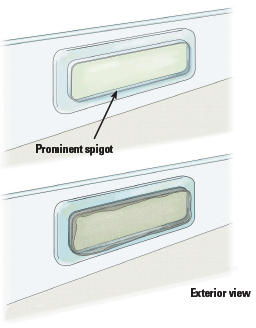
Screen Testing
March 1, 2019
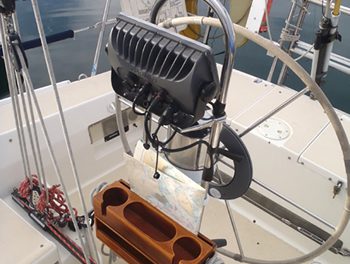
Weather in Pictures
May 1, 2013
Current Edition
Join Our Mailing List
Get the best sailing news, boat project how-tos and more delivered to your inbox.
You have Successfully Subscribed!

Service Locator
- Angler Endorsement
- Boat Towing Coverage
- Mechanical Breakdown
- Insurance Requirements in Mexico
- Agreed Hull Value
- Actual Cash Value
- Liability Only
- Insurance Payment Options
- Claims Information
- Towing Service Agreement
- Membership Plans
- Boat Show Tickets
- BoatUS Boats For Sale
- Membership Payment Options
- Consumer Affairs
- Boat Documentation Requirements
- Installation Instructions
- Shipping & Handling Information
- Contact Boat Lettering
- End User Agreement
- Frequently Asked Questions
- Vessel Documentation
- BoatUS Foundation
- Government Affairs
- Powercruisers
- Buying & Selling Advice
- Maintenance
- Tow Vehicles
- Make & Create
- Makeovers & Refitting
- Accessories
- Electronics
- Skills, Tips, Tools
- Spring Preparation
- Winterization
- Boaters’ Rights
- Environment & Clean Water
- Boat Safety
- Navigational Hazards
- Personal Safety
- Batteries & Onboard Power
- Motors, Engines, Propulsion
- Books & Movies
- Communication & Etiquette
- Contests & Sweepstakes
- Colleges & Tech Schools
- Food, Drink, Entertainment
- New To Boating
- Travel & Destinations
- Watersports
- Anchors & Anchoring
- Boat Handling
- ← Technology
Repowering Your Boat: What You Need To Know
Advertisement
There are many considerations when starting a repower project, including some that are unrelated to the performance requirements of your boat.
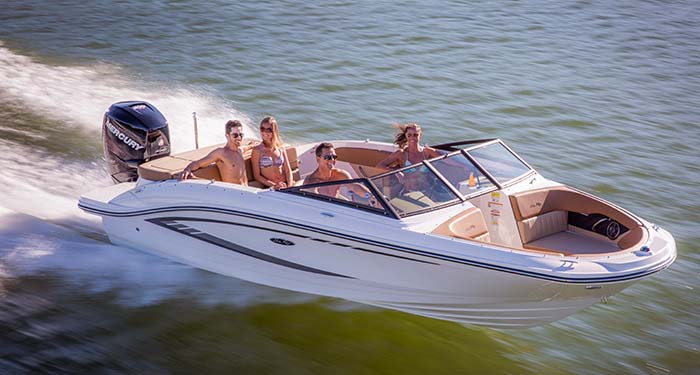
These five below, should give you a good starting point from which to plan your shopping list.
Transom Limitations: Space and Weight
The physical limitations of your transom will dictate how much horsepower and weight you can put back there. While modern four-strokes are getting close to their two-stroke counterparts in weight, they still will add to the load at the stern. If you were not running the maximum-rated horsepower in your previous set up, you may have some wiggle room, and be able to absorb some extra weight without impacting seaworthiness. It's a good idea to check with your boatbuilder what the design limitations were before you start shopping. Weight considerations could limit you to DI two-stroke technology.
Space is more of an issue if you are running twins (or more) because some of the high-horsepower modern four-strokes need more width between the engines, but not always. Honda, for example, designed their four-strokes to fit the standard footprint for easy repowers.
In addition, with the increased horsepower ratings available today, you may wish to switch from twins to a single outboard configuration. For example, swapping twin-150s for a single 300-hp motor, in theory, will reduce both weight and drag, which should increase fuel economy without sacrificing performance. However, boatbuilders caution that the increased power and torque of these modern, power-dense outboards can be too much for transoms that weren't designed for it. A safe bet is to limit horsepower to the highest horsepower single engine configuration offered as original equipment. The boatbuilder should be able to go into greater detail.
Rigging: Time To Upgrade To Electronic Controls?
This is your chance to simplify your dash and clean up the console, as well as consider adding joystick control, if you are running twins. If you've got a large multifunction display, you may also wish to network it to your outboard(s) to allow it to display engine data. To do so, you need to look for an outboard that supports NMEA standard data outputs or one that offers a "gateway" converter that changes proprietary outputs into a data stream that your chartplotter can use.
Converting to joystick control will also require hydraulic steering, and a specialized command bus to talk to the joystick.
How you intend to use your outboard? If you do a lot of trolling or low speed operation, you may benefit from an outboard that makes use of fuel saving tactics like stratified combustion. If you run offshore or through an inlet to go fishing, you may benefit from electronic throttle controls combined with an outboard with instantaneous mid-range punch.
Maintenance Schedules
Scheduled maintenance intervals have a big impact on the cost of ownership during the life of the outboard. In general, DI two-strokes will have longer intervals between scheduled services because they lack mechanically-controlled drive trains that need adjustment every 500 to 1,000 hours. Although recently Mercury unveiled a 150-hp four-stroke that should not require valve adjustments at all during it's lifetime. Four strokes also need regular oil changes. But annual oil changes should be weighed against the operating cost of burning oil in a DI two-stroke.
Electrical Demand
The amperage output of most outboards has increased over the years, but if you run an electric trolling motor all day, or a suite of electronics while drifting or slow-trolling, the alternator on your outboard better be able to keep up. Check not only the rated amperage output, but also make a note of what the output is a low rpm, where it could half of what it is a cruising speeds.
Related Articles
The truth about ceramic coatings for boats.
Our editor investigates the marketing claims of consumer-grade ceramic coatings.
Fine-Tune Your Side Scan Fishfinder
Take your side-scanning fishfinder off auto mode, and you’ll be spotting your prey from afar in no time
DIY Boat Foam Decking
Closed-cell foam flooring helps make boating more comfortable. Here’s how to install it on your vessel
Click to explore related articles
Michael Vatalaro
Contributor, BoatUS Magazine
Michael Vatalaro is the former executive editor of BoatUS Magazine. He has a Pursuit center console, which he uses in the Chesapeake Bay.
BoatUS Magazine Is A Benefit Of BoatUS Membership
Membership Benefits Include:
Subscription to the print version of BoatUS Magazine
4% back on purchases from West Marine stores or online at WestMarine.com
Discounts on fuel, transient slips, repairs and more at over 1,200 businesses
Deals on cruises, charters, car rentals, hotel stays and more…
All for only $25/year!
We use cookies to enhance your visit to our website and to improve your experience. By continuing to use our website, you’re agreeing to our cookie policy.

Beta Marine Repower Center
Marine engines, whether or not they get a lot of use, wear down over time. They don’t run efficiently, they lose power, and they become a money drain. Replace your old, tired, outdated marine engine with a reliable Beta Marine diesel engine today. Use our resourceful Beta Marine repower center to find the right engine for your boat. There are lots of variables to consider when making a decision, such as the boat, engine bed, and how you plan to use the boat. Our consultants can help you make sense of all the variables. Choosing the correct engine to repower your sailboat depends upon several different criteria and we would always recommend that you discuss with other owners of your class of yacht as well as your local Beta Dealer or engine installer. Utilize the Beta Marine repower center to begin your search.
CONTACT A REPOWER CONSULTANT
Or call 252-249-2473
" * " indicates required fields

Repower Guide
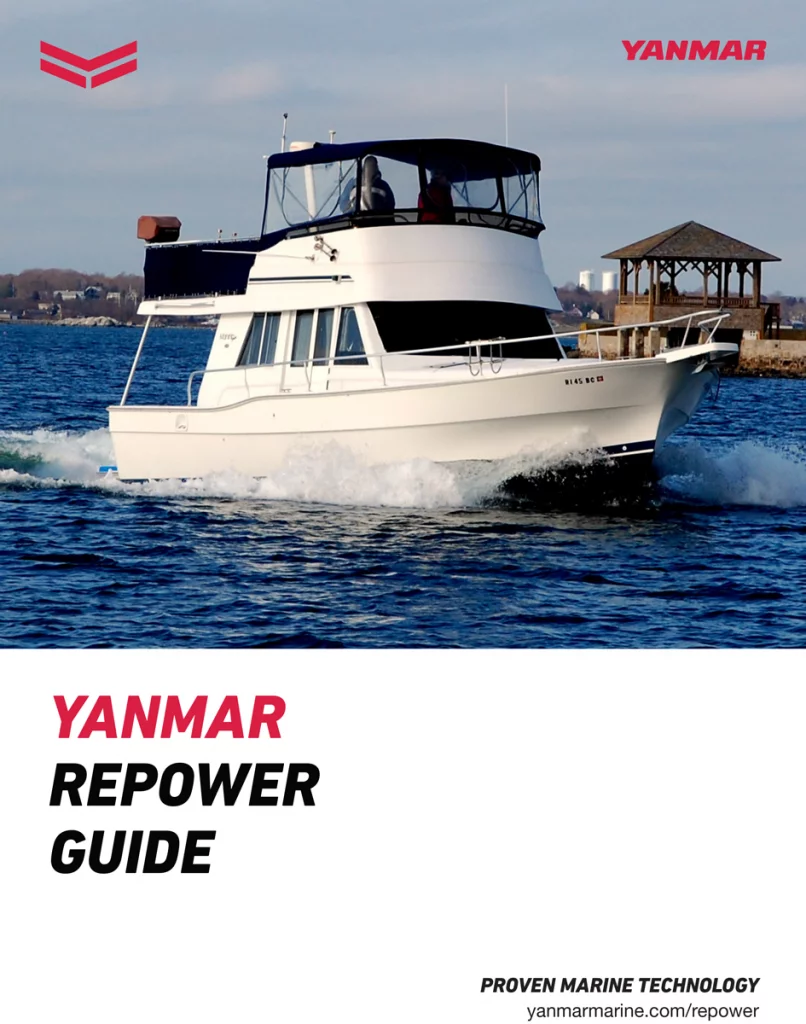
Download Our Repower Guide for FREE!
Repowering your boat is a major decision and there are several things to consider. We’ve collected some important information to help guide you through this decision and process. Connect with a certified YANMAR dealer or distributor when you are ready to make the next steps in your repower project.
Sign-up to receive the latest information from YMI about new products, services, and updates.
Dealer Locator
YANMAR’S extensive global service and parts network spans 130 countries and over 2100 locations.
We’re here to help and would love to hear from you. Contact us with inquiries, comments, and feedback.
Elige tu idioma
Choisissez votre langue, velg ditt språk.
Nederlandsk
Portugisisk
Välj ditt språk
Portugisiska
- BOAT OF THE YEAR
- Newsletters
- Sailboat Reviews
- Boating Safety
- Sails and Rigging
- Maintenance
- Sailing Totem
- Sailor & Galley
- Living Aboard
- Destinations
- Gear & Electronics
- Charter Resources

Aging Power Plants: Rebuild or Repower?
- By Tim Murphy
- Updated: October 22, 2012
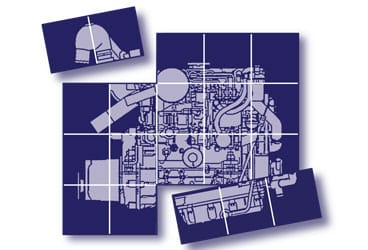
Many sailboats built two decades ago or earlier still have plenty of life left in them. But their engines may not. Grey Marine, Palmer, Perkins, Buhk, Universal, Pathfinder, Faryman—these once-common names in marine propulsion are all but gone from newer boats. Many of these engines were designed as truck or tractor motors, then retrofitted for marine use. The question facing you now is: Should you rebuild the existing engine? Or repower with a brand-new engine?
Let’s start with the cost of repowering. “You’re talking probably between $12K and $16K for a 30-footer, and $18K to $22K for a 40- to 45-footer,” says Mike Muessel of Oldport Marine, in Newport, Rhode Island, who’s repowered dozens of boats.
Expensive? Yes. But before you dismiss that option, first account for the real costs of a rebuild. “When people talk about rebuilding an engine, they usually mean rebuilding the internals—new pistons and rings and so forth,” says Muessel. Too often, he says, they forget to tally the cost of all the auxiliary parts: the starter ($400 to $800), alternator ($400 to $800), heat exchanger ($1,200), and saltwater pump ($500). Add a wiring harness, engine gauges, switch panel, transmission, and injection pump, plus labor, and the costs of a rebuild start to compete. It’s not uncommon, Muessel says, to spend 60 percent of the cost of repowering on a rebuild. And you’re still left with an older engine that’s long out of warranty.
If you’re shopping for an older boat, take a good mechanic with you on the sea trial and get a thorough assessment of the engine’s condition. With that firsthand information, factor the real costs of a dependable power plant into your final negotiations for the boat.
- More: boat buyer's guide , boat maintenance , DIY Sailboat Projects , How To , Sailboats , seamanship , ship's systems , systems
- More Sailboats

New Sailboat Brand: Mishi Yachts

For Sale: 2005 Tayana 48

For Sale: 2015 Catalina 355

For Sale: 1998 Hinckley 51

Hurricane Beryl Relief Efforts: How You Can Help

Gary Jobson To Talk U.S. Prospects in Upcoming World Sailing Competitions

Make Downwind Sailing Fun Again. Turn Off That Motor and Unfurl Your Kite!
- Digital Edition
- Customer Service
- Privacy Policy
- Email Newsletters
- Cruising World
- Sailing World
- Salt Water Sportsman
- Sport Fishing
- Wakeboarding
- 2024 BOAT BUYERS GUIDE
- Email Newsletters
- Boat of the Year
- 2024 Freshwater Boat and Gear Buyers Guide
- 2024 Boat Buyers Guide
- 2024 Water Sports Boat Buyers Guide
- 2024 Pontoon Boat Buyers Guide
- Cruising Boats
- Pontoon Boats
- Fishing Boats
- Personal Watercraft
- Water Sports
- Boat Walkthroughs
- What To Look For
- Watersports Favorites Spring 2022
- Boating Lab
- Boating Safety

Things to Consider When Repowering With Electric Motors
- By Capt. Vincent Daniello
- August 7, 2023
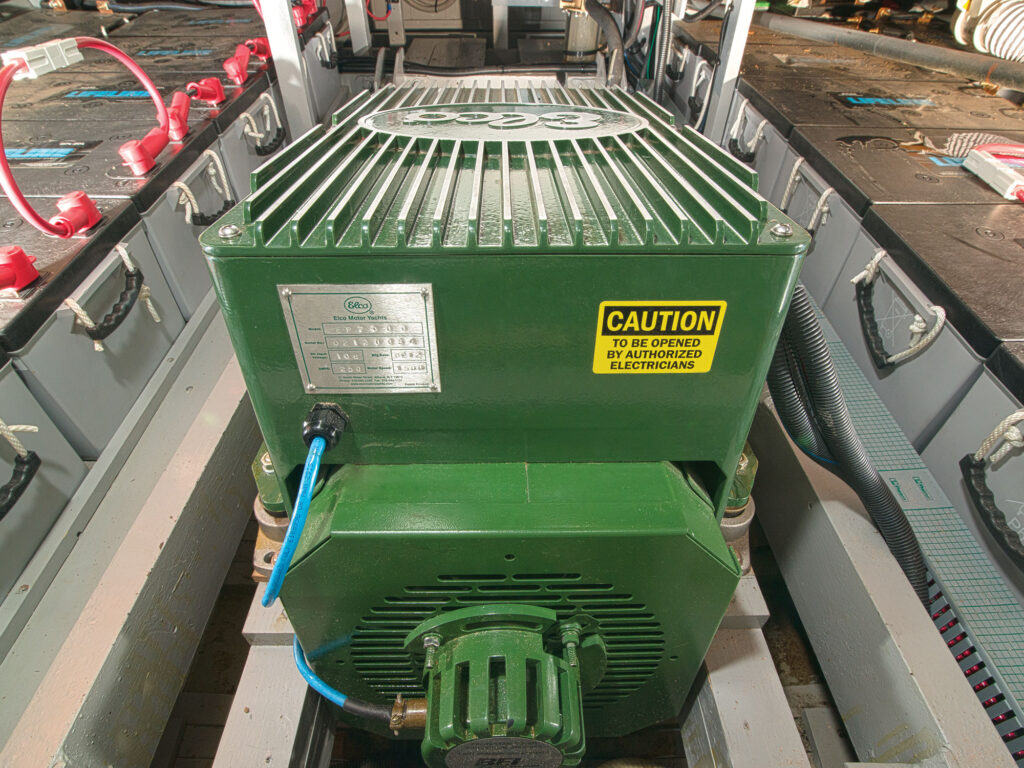
Much reporting focuses on reasons why one might choose electric marine power. The issues of range, speed, noise levels, winterizing and ethanol challenges, lake restrictions, environmental concerns and more all must be resolved on an individual basis. Little gets said about how a boater choosing to repower with electric actually gets that accomplished. Is it DIY? And if not, how does it get done?
Are you considering repowering with electric? Here’s a look at what it takes to cut the fuel line and plug in.
How Fast, How Far and How Long?
Electric propulsion can provide speed, range and runtime, but not all at once. An electric boat, motor and battery combination might top 25 mph for an hour. The same boat can also travel more than 50 miles at 6 mph, or longer still at slower speed. That makes the first step in going electric determining how far, in miles, you want to go fast, and how long, in hours, you need to go slow. Then match a motor and batteries to suit.
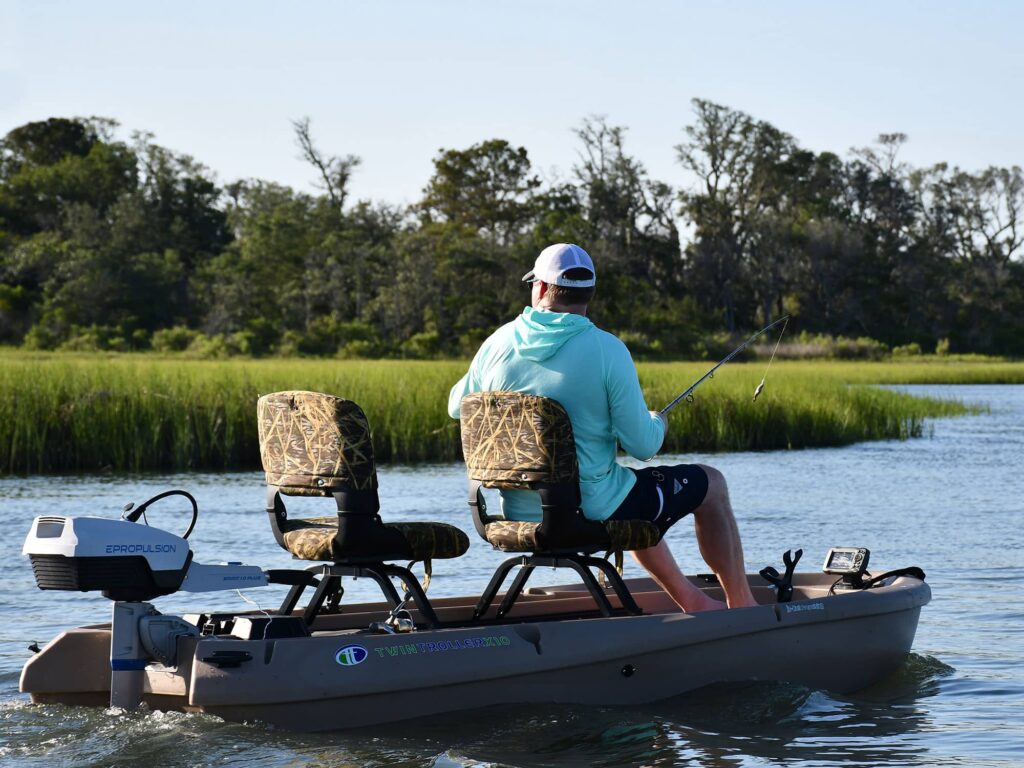
Portable Propulsion (DIY)
For small boats pushed to modest speeds, small, light options from ePropulsion , Torqeedo and Elco —equivalent to 3 hp gas outboards—easily clamp onto a transom yet store within a lazarette without worry of spilled gas. Most go for about an hour at full throttle, or 90 minutes at cruising speed, from one integrated or small external battery. These range from $2,500 to $3,500 for the motor, battery and charger.
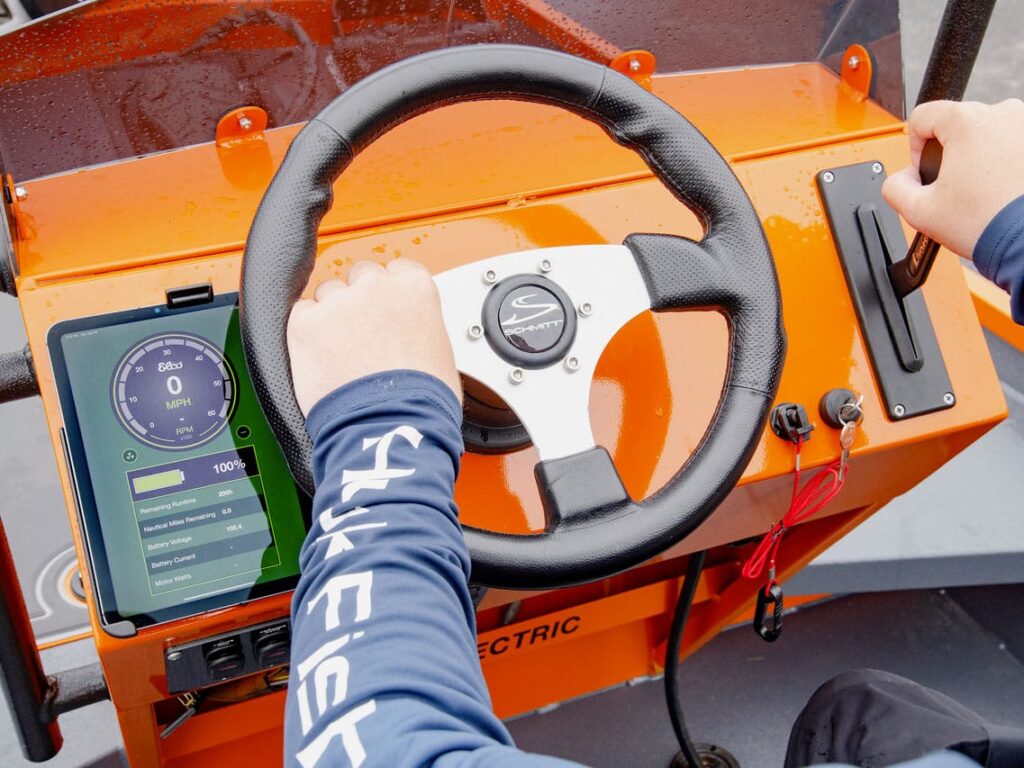
Hardwired Horsepower (DIY or Dealer)
Elco, Torqeedo, ePropulsion and Flux offer motors equivalent to gas outboards from 5 hp to 25 hp. These typically connect to fixed battery banks mounted aboard. Most companies offer self-installation packages that call upon basic mechanical skills. All facilitate turnkey installation through dealer networks. Flux eliminates DIY installation, partly because its outboards utilize higher voltages than others in this horsepower range.
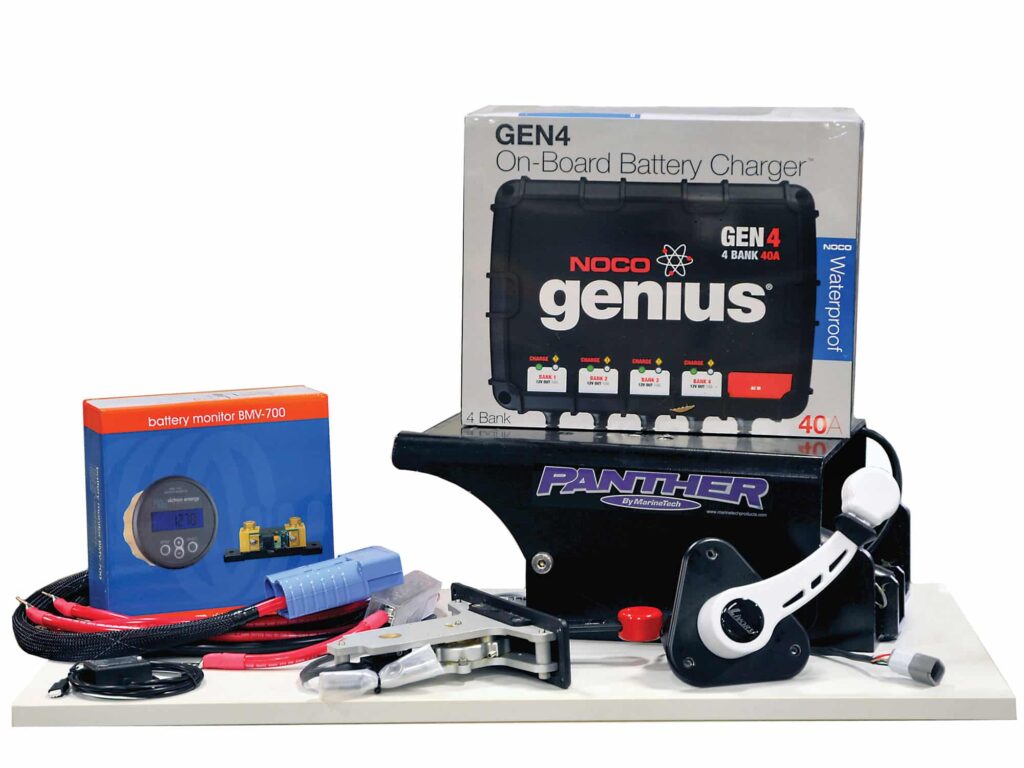
These midsize motors tend to work best for bigger boats at slower speeds. Elco, for example, says its EP-20 can push a 24-foot pontoon boat about 8 mph for two hours, while the same charge provides more than 10 hours of battery life at 5 mph; the cost is around $11,500. Just be sure to choose adequate power to dock in a breeze and then back off the throttle to extend range.
Planing Power (Dealer, Some DIY)
Elco, Torqeedo and Flux offer motors comparable to ICE outboards from 30 hp through 100 hp. Most utilize twice the operating volts compared to companies’ smaller outboards, with those added volts providing more short-term power, which is needed for the few high-load moments while boats climb fully onto plane. Only Elco facilitates DIY installation within this power range, even offering pre-made cables, equipment and accessories. The complete package propelling Rock Proof’s ePro 1760R , a boat we tested in Boating ’s March 2023 issue, utilizes Elco’s EP-50 and 20 kWh of lithium batteries; it sells for about $22,500.
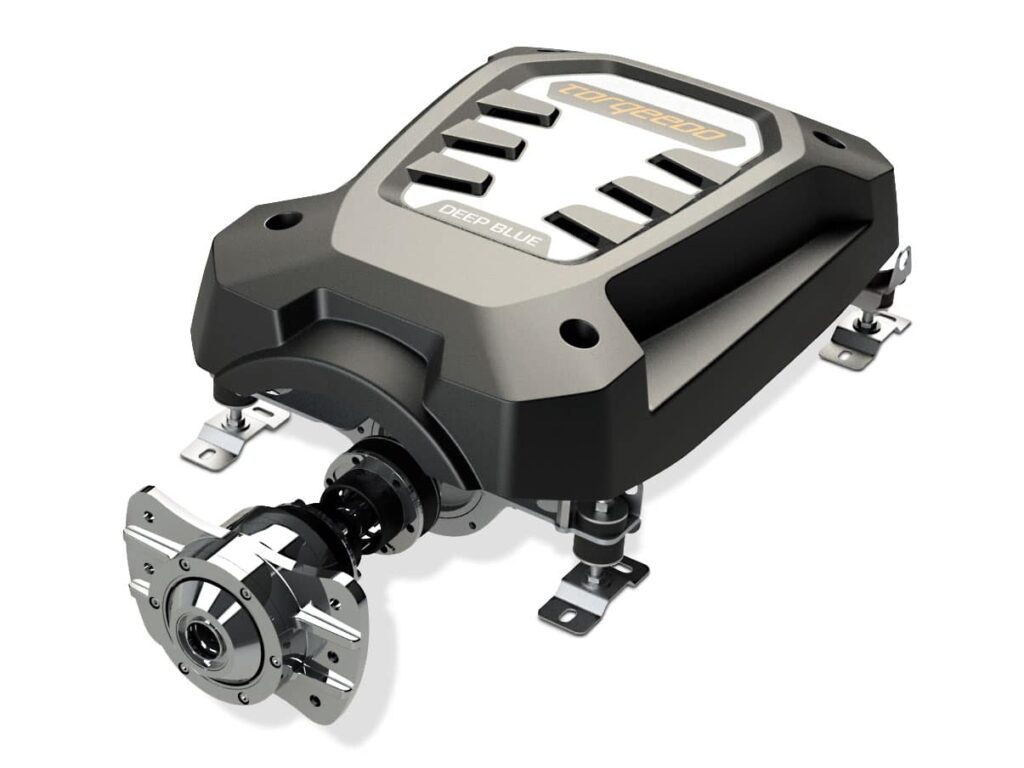
Inboard Options (Dealer, Some DIY)
While Elco has offered modern electric-propelled launches since 1987 and inboard repower options since 2009, its newest inboard motors are one-third smaller and half the weight of previous models, illustrating industry trends. Torqeedo and, recently, ePropulsion also offer powerful, light inboard motors for either repower or OEM installation. Most are intended to operate at modest speed, although Torqeedo offers three models operating at higher rpm for planing boats—its largest replaces 135 hp ICE engines while weighing one-third of a comparable ICE inboard motor and transmission (195 pounds plus batteries versus 567 pounds for a 135 hp MerCruiser 3.0 bobtail). A complete system with batteries that can run 50 minutes at full throttle costs about $120,000.
Read Next: Going Electric to Repower an Antique Boat
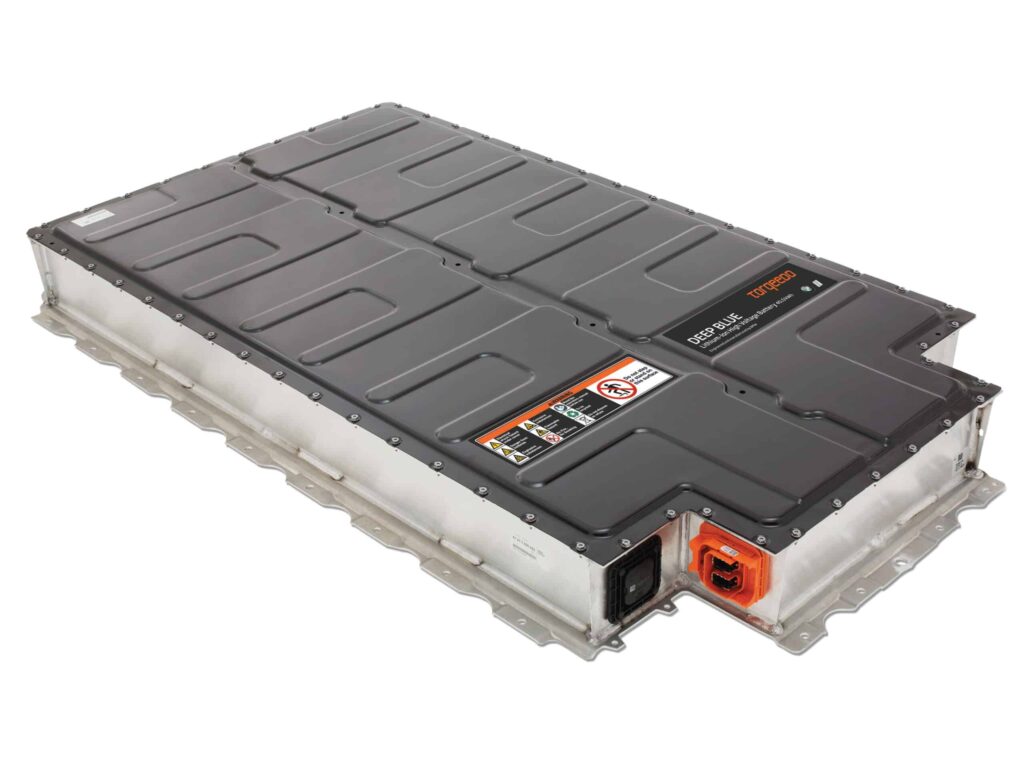
Electric motors ranging from 5 hp to 25 hp typically operate at 24 or 48 volts. This provides the broadest battery choices to balance size, weight, range and cost. All Elco and many Torqeedo motors accommodate any brand or battery type that meets specifications, adding flexibility. Absorbed glass mat (AGM) batteries , for instance, save considerable dollars compared to lithium for slow-speed boats. Larger motors, particularly when boats approach planing speed, require lithium batteries, which are half the weight yet provide higher continuous output compared to AGM.
- More: August/September 2023 , Boats , elco , electric boats , Engines , torqeedo

Boat Test: 2024 Viaggio Lago V 16U

Boat Test: 2024 Sea Pro 292DLX Offshore

Boat Test: 2024 Parker Offshore 2900 CC

Boat Test: 2024 Bass Cat Jaguar STS

Suzuki Marine Initiates Sustainable, Ethanol-Free Marine Fuels Plan in Florida
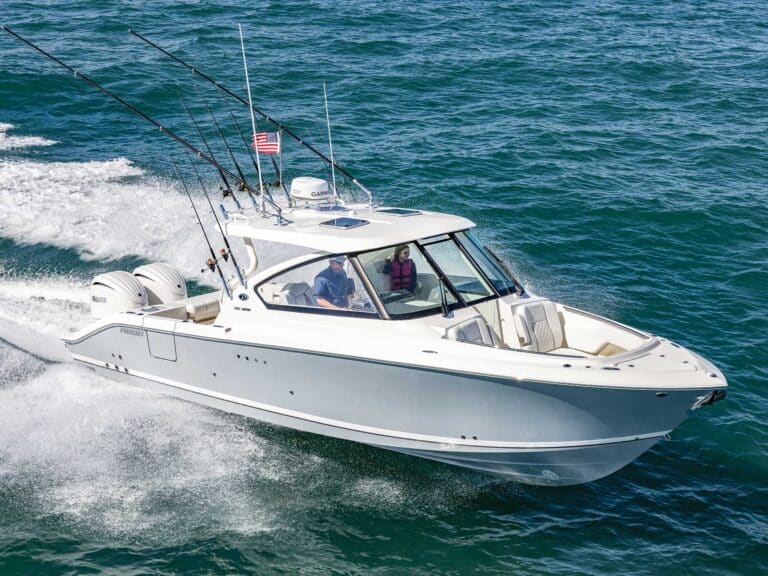

Boat Test: 2024 Pursuit DC 306
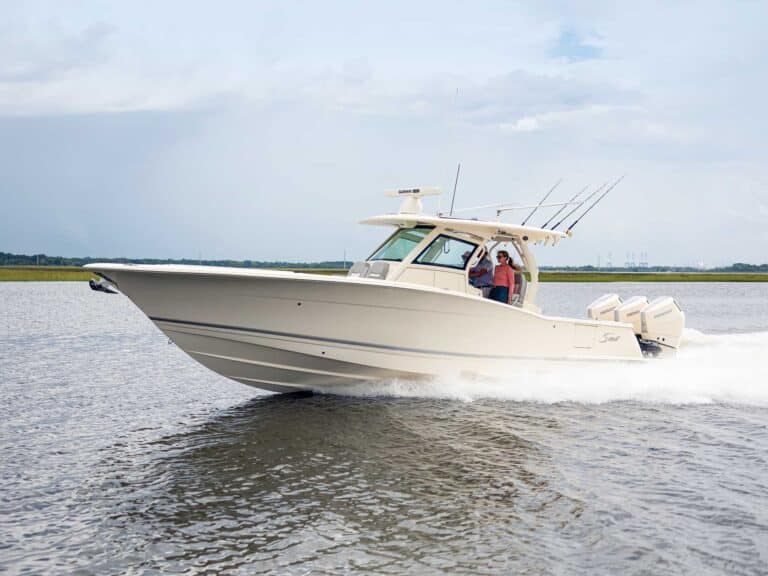
Boat Test: 2024 Scout 357 LXF

- Digital Edition
- Customer Service
- Privacy Policy
- Cruising World
- Sailing World
- Salt Water Sportsman
- Sport Fishing
- Wakeboarding
Many products featured on this site were editorially chosen. Boating may receive financial compensation for products purchased through this site.
Copyright © 2024 Boating Firecrown . All rights reserved. Reproduction in whole or in part without permission is prohibited.
The Complete Guide to Repowering Your Boat

Quick Navigation:
What does repowering a boat mean, should i repower my boat, boat repower options and considerations, how to prep a boat to repower, how to repower a boat outboard, how long does it take to repower a boat, how often should i repower a boat, is it better to repower a boat or buy new.
If you're tempted to buy a new boat because you're interested in an upgrade, you're not alone. While new boats are exciting and fresh, they're expensive, and you may not have the budget for one at the moment. If your boat could use some updates and you want to avoid buying new, consider repowering. This approach can be a more cost-efficient way to keep your current boat yet add the necessary updates to keep it running smoothly.
Whether you're repowering a pontoon boat or a fishing boat, you'll want to read a bit about repowering before you proceed. Use our guide for help thinking about the various aspects of repowering your boat and whether it's the right choice for you.
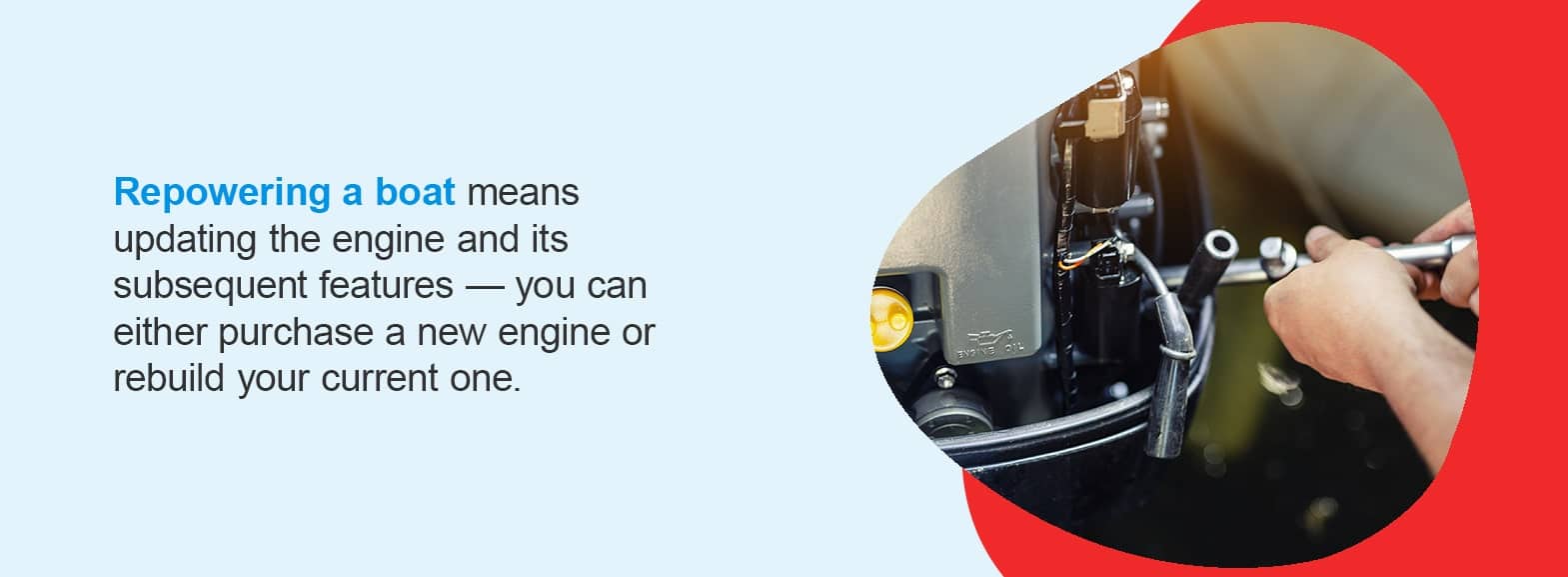
In short, repowering a boat means updating the engine and its subsequent features — you can either purchase a new engine or rebuild your current one. While the engine is certainly a large part of the process, the engine is usually connected to other features on your boat, like steering controls, gauges, fuel and battery systems and more. As a result, almost every function of your boat will feel upgraded.
The type of engine your boat has will partly determine how complex of a project you're taking on. If you're looking to repower a boat's outboard engine, the process will likely be quite simple because the engine is easy to access. If you want to repower an inboard boat, the engine is more difficult to access and is more likely to be connected to other parts of the boat, so the process becomes more complex.
If you're mechanically inclined, you may be able to do the repower yourself, though it's usually best to let professionals repower boat engines. With the proper tools and training, service professionals can ensure your boat gets repowered with less risk of damage.
While repowering older boats can end up being an in-depth project, it's a smart way to improve numerous functions and controls to keep your boat running longer for less money.

There are many reasons you might consider repowering your boat. If you need boating reasons to repower, consider how updating your engine can breathe new life into your boat. Doing so can make taking your boat out on the water a whole new experience, all without having to pay for an entirely new boat.
For many boat owners with aging boats, the body of the boat is still in good condition, but the engine may be racking up a substantial number of hours. When that happens, the engine is likely reaching the end of its life and is running inefficiently. A weak engine can cause the entire boat to run poorly.
When there's nothing wrong with the boat itself but the engine needs a reboot, it often makes sense to repower your boat rather than buy a new boat. If you're looking for more horsepower or better fuel efficiency, you should also consider how repowering can be more financially beneficial than buying new.
Learn About Boat Loans

Repowering your boat is an opportunity to make necessary changes, though not every change will be beneficial to the way your boat runs. Repowering a boat is more than just installing a new engine — there are numerous aspects and different options for each aspect that you should consider.
Here are some important considerations when choosing to repower your boat:
1. Horsepower
Many people want to upgrade their boat's horsepower when repowering. However, you should be cautious if this is something you're considering.
Boats have horsepower capacities, and exceeding them can cause serious damage to the entire boat. Be sure to check what your boat's maximum horsepower rating is before you proceed with a repower. The set horsepower is the horsepower you should keep in mind when repowering, regardless of what you had previously.
Your boat will perform best at its maximum horsepower rating because the engine won't be struggling. This aspect often also results in better fuel economy, too.
2. Engine Brands
The most significant part of repowering your boat is replacing the engine, so naturally, you may want to consider other brands than your current one. You'll likely want to find the best motor to repower older boats so you know it'll work well. Changing the engine brand can mean more work to complete the project, but if you're unhappy with the brand's performance, warranty or another aspect of the brand, it may make sense to switch brands.
Switching brands typically requires the boat to be re-rigged, which will require more of a financial investment on your part. However, re-rigging your boat with a different brand engine is an opportunity to replace outdated controls, which is something you may need to do anyway.
While it's not as common now, boat owners used to switch from gas to diesel because it was cheaper. If you're thinking about how to repower a boat to a diesel engine, it may be best to avoid doing so. Today, diesel engines aren't as cost-efficient.
Additionally, repowering to a diesel engine is quite a challenging task. Repowering to a diesel engine typically requires your entire boat's system to be reengineered, which means the cost might not make it a viable option. If you're wanting to go diesel, consider finding a new or used diesel boat for sale instead of trying to repower your current boat to be diesel.
3. Number of Outboards
If your boat uses an outboard engine, you may consider changing the number of outboards you use. This is another aspect of re-powering you should approach with caution.
If your boat currently uses two outboards, you may be able to switch to one large outboard rather than two smaller ones. When changing the number of outboards on your boat, it's important to consider the weight of the motors and the space two of them take up. You should look for a new outboard that offers similar or more power at a similar weight.
Switching from one outboard to two may not make as much sense, especially because many single outboards today can power your boat just as well or better than two do. Additionally, trying to put two outboards where there was only one can raise several issues. For example, two outboards may add too much weight to the boat, there may not be enough room or your boat may lack the necessary structural support.
4. Controls and Instruments
Repowering your boat is a great opportunity to get everything updated, especially the controls. Like we mentioned earlier, switching engine brands may require you to change your boat's controls, but doing so anyway can improve your boat's performance and your experience.
From the throttle and steering to the electrical harnesses and cables, updating your system will make your new engine more enjoyable. Also consider how digital instruments can provide more information than old gauges, like fuel consumption and efficiency.
5. Joysticks
If you're repowering a bass boat or other fishing boat, you might consider adding a joystick control. Joysticks enable you to maneuver your boat at slow speeds with more accuracy. This can be extremely beneficial when docking or making slight changes in direction while fishing.
However, there are a couple of important factors to consider before adding a joystick. For example, when adding to an existing engine system, joystick systems work better with two outboards rather than a single engine. Additionally, installing a joystick system can be costly, so you'll need to determine if you can afford it and whether it's worth the investment.
6. Fuel System Components
Installing new fuel system components is highly recommended when repowering an old boat. Replacing your fuel hoses ensures your boat has ethanol-resistant, Coast Guard-approved hoses. Checking fuel components regularly and replacing them as necessary is crucial to maintaining your boat's engine.
Additionally, be sure to install properly sized hoses and fittings if you upgraded the horsepower. Components that are too small can prevent fuel from getting to the engine, hindering performance and damaging it.
7. Battery Systems
Depending on the engine and features you want to add, your current battery system may not be capable of powering the entire system. For example, outboards with power steering may require more power than your old battery can handle. In some cases, you may be able to replace old battery cables that may be corroded. Doing so has the potential to improve the battery system.
While doing a repower yourself can be challenging, if it's an outboard, it may be relatively simple. Boats like pontoons and many fishing boats use outboards, so if you have an outboard, you could do it yourself as long as you have the proper tools and knowledge. Consider the following process to learn how to repower a pontoon boat with an outboard engine.
Remove the Engine

Preparing your boat for a repower requires removing your current engine. If you have any hesitations about being able to properly remove your engine, it's best to consult a mechanic to help you out. This way, you won't inadvertently cause damage to the engine throughout the process.
To start, you'll need to prepare the old engine and various cables and wiring. There can be a lot of value in these parts, so if you're planning on selling them, be sure to keep them in good condition and neatly organized. Potential buyers and parts-seekers will look for individual items and entire cable systems, so even if something doesn't work, keep the parts because someone may see value in them.
First, the control, battery and steering cables should be disconnected. If you're reusing the steering and battery cables, be sure to set them aside so they don't get mixed in with the for-sale items. Next, carefully take out the controls, gauges and wiring harnesses. To make installing new harnesses easier during the repower, tie pull-cords to the ends of the wiring harnesses.
To finish prepping the engine for removal, drain all of the engine fluids. Drain the oil and remove the oil filter. Remove any other fuel filters and remember to drain the fuel lines.
Prepare a Gantry

Another important aspect of preparation is preparing a gantry. Since most engines can easily weigh up to 500 pounds, you'll likely need a system for lifting the engine off the boat's transom.
A gantry is essentially a support frame you can use as a crane to lift the engine. If you have a tree with a thick overhanging branch you can park your boat trailer under, this will make a great gantry. Your other option is to build a gantry with four legs, cross-braces and a traverse beam.
Stability and strength are crucial here to ensure the gantry can support the weight of your engine. Once you have a gantry ready, you'll want to tow your trailer into position so the outboard is centered underneath the branch or beam.
Apply for a Boat Loan

With your outboard in place, it's time to remove it. For this process, you'll need a come-along strap. One end of the come-along will attach to the branch or beam and the other end will hook onto the outboard's lifting eye.
The location of your outboard's lifting eye will depend on its brand. You may find it mounted under the cowl, while others may lack one entirely. In this case, you'll need to purchase a lifting eye and screw it into the top of the engine.
With your come-along attached to the lifting eye, you'll want to ratchet the strap so there's minimal tension. With the strap tight enough to support the engine when it's loose from the boat, you can begin unscrewing the nuts on the engine mount. With the nuts removed, you can get the bolts out.
With a partner, slowly move the boat forward just a bit while the other person gently rocks the engine to loosen the bolts. It's crucial to do this step carefully and slowly to prevent the mounting holes on the transom from getting damaged. Damaged mounting holes will make it difficult to install a new outboard securely.
Once the bolts are removed, pull the boat away and your old engine will remain hanging from the gantry. To get the old engine out of the way, simply use the ratchet to lower it onto a truck bed or trailer to haul it away.
The process for mounting a new outboard will be similar, although performed backward. If you're installing an outboard with compatible controls to your current setup, the installation will be as simple as securing the engine on the transom and rewiring the controls. If you need to update your old controls, gauges and instruments, you may need to seek help from a repower dealer as these processes become significantly more complex.
The amount of time it takes to repower a boat will largely depend on the complexity of the upgrade, the type of engine and whether you're doing it yourself or having a dealer handle it. For example, an outboard repower could take as little as an afternoon, but repowering a boat with electric features and new systems will take more time.
If you have a dealership service do the repower, the time it takes will vary depending on their availability and readily they can get the necessary parts.
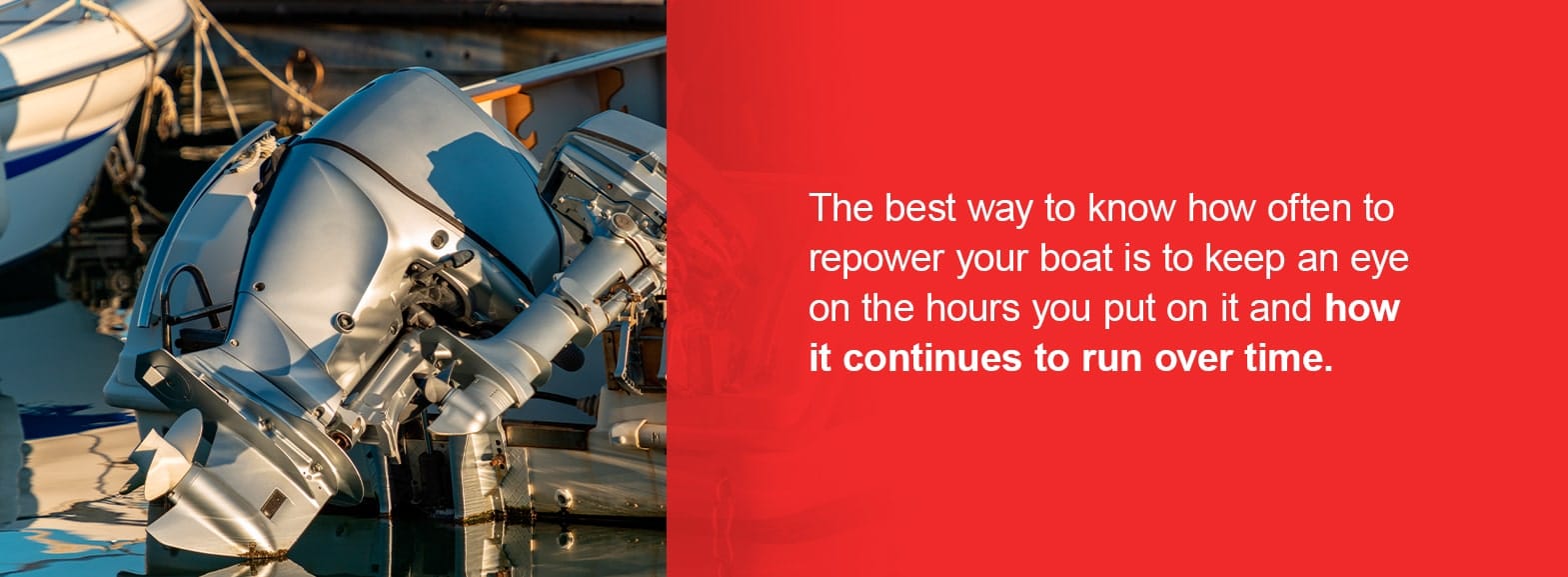
If you've bought a used boat, you'll likely need to repower it sooner rather than later because the motor will likely already have several hours on it. If the engine is well-maintained, you may be able to put up to 5,000 hours on it before repowering it.
However, most boat owners need to repower after 2,000 hours . While this may make it sound like you'll need to repower your boat often, for most boat owners who only use their boats seasonally, this could end up being 10 or more years.
The best way to know how often to repower your boat is to keep an eye on the hours you put on it and how it continues to run over time. If you notice it starting to run poorly, you may be looking at a repower sooner than that. Keep an eye on it and you'll know the best time to repower your boat.

In many cases, repowering is a more cost-efficient option for boat owners looking to upgrade. If your boat is still structurally sound but could use some more power, repowering may be a viable option. Luckily, there are financing options available whether you want to buy an engine to repower your current boat or decide to get a new boat altogether. If you're unsure of the best option for your wallet and your boat, consider having a service dealer give you a price estimate based on the type of boat and its condition.
Compare prices — if the cost of repowering is close to or exceeds the cost of buying a new boat, it probably won't end up being the right option. At that point, buying a new boat will be more reliable and may even have newer features you wouldn't be able to get installed on your old boat.
Learn About Boat Loans From My Financing USA
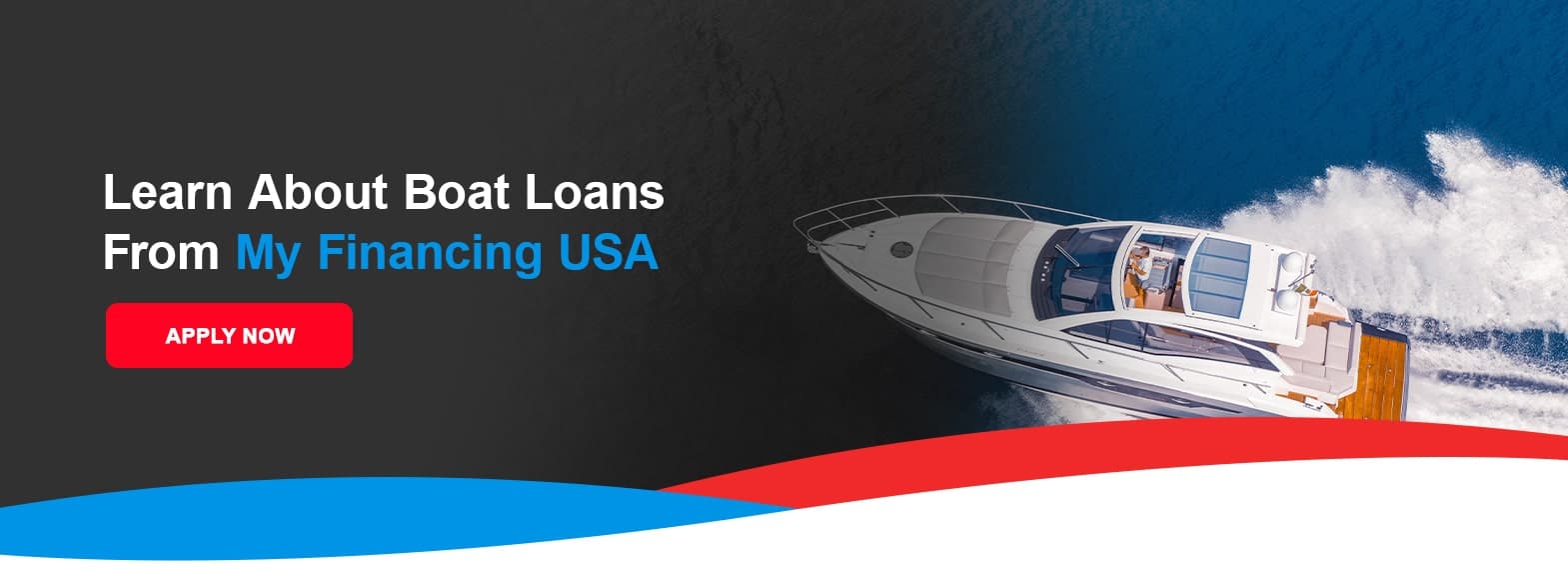
Whether you're repowering your current boat or looking to invest in a new one, you're likely looking for financing options. At My Financing USA, we can help you finance engines or a new boat entirely. We do the leg work for you when it comes to finding the best boat financing programs across the nation. We'll help you get pre-qualified and will only send you to one lender at a time so you can protect your credit in the process.
With an entirely online process, you can sign documents electronically and receive funds fast. With our help, you could get your financing within two to three days and start your repowering project sooner or buy the new boat you've been admiring. Our application process is simple, and you can fill out an application in minutes to get started.
Would you like more information? Contact our friendly team today!
Additional Resources on Boats:
- Boat Winterization Guide
- How to De-Winterize Your Boat
- Boat Maintenance: Everything You Need to Know
- Guide to Different Types of Boats
- How to Rent a Boat Slip
Related Blog Posts
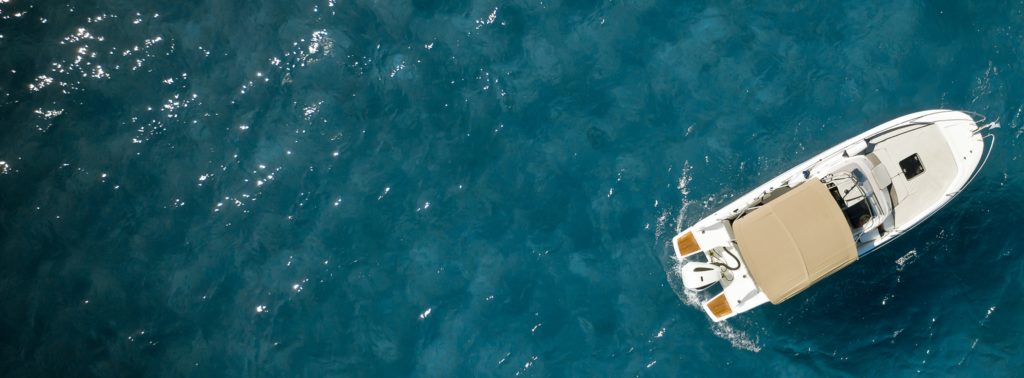
Can I Still Go Boating During the Coronavirus Pandemic?
Read Article
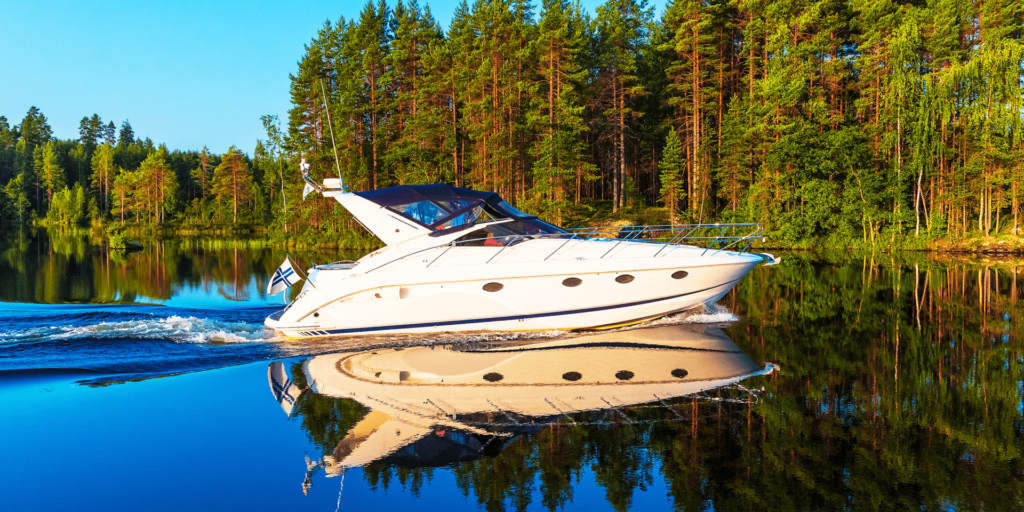
Best Boating Destinations in California
Blog topics.
- Maintenance
- Refinancing
- Winterization
Learn More About Our Boat Loans

- Forums New posts Unanswered threads Register Top Posts Email
- What's new New posts New Posts (legacy) Latest activity New media
- Media New media New comments
- Boat Info Downloads Weekly Quiz Topic FAQ 10000boatnames.com
- Classifieds Sell Your Boat Used Gear for Sale
- Parts General Marine Parts Hunter Beneteau Catalina MacGregor Oday
- Help Terms of Use Monday Mail Subscribe Monday Mail Unsubscribe

Catalina 30 -repower options
- Thread starter Don
- Start date Jun 29, 2001
- Catalina Owner Forums
- Ask A Catalina Owner
My Universal 5411 is dead - I need to repower my 1983 Catalina 30. I am looking for options. I have been told that a new engine installed is around 11K. Does this sound about right? I hate to spend that much on an older baot. Has anyone ever repowered a 30 with one of those new 4-stroke outboards? I was thinking it may be a bit funky, but alot less expensive. I know- it would screw up my resale, but I anot really concerned about that at this point. Any ideas? Thanks
How about the A-4? About half the price, and very dependable! Best Regards, Rob
John A. Visser
What do you mean by "dead?" I imagine that unless the block and head are cracked, you could get your motor rebuilt, or exchange for a remanufactured motor, for much less than the outright purchase of a new one. And, if my memory serves, you can buy a new twin cylinder diesel of about 12 HP for less than half of $11k, perhaps less than $4k (5411 is twin of 11 HP). I would discourage strongly going to a gas motor like the A4 for a couple of reasons: 1. gas is inherently more dangerous than fuel oil. 2. you already have the diesel fuel tank and plumbing and filter system. 3. all other things being equal, the boat with the gas engine is worth less than the boat with the diesel. For such a small engine, I recommend a reman witha core swap and swap it yourself. jv
Oh man.. Not this discussion again.... John, I have to disagree with you about A-4's. They are not dangerous, as their numbers and service histories will tell you. Easily serviced and properly maintained - they will last quite a while. While gasoline is more flammable than diesel, it is not necessarily more dangerous. Bottom line: my 1979 A-4 still runs like a top, and I don't need to replace it, do I? The fact that the diesel needs to be replaced and the gas engine doesn't speaks volumes. Best Regards, Rob
Jeff Walker
My neighbor uses an outboard His Yanmar finally died in his Cat 30 and he put a 15 horse Honda 4 stroke mounted on a bracket. He made a couple of mistakes. The engine should have been a long shaft because the engine comes out of the water and races in any kind of rough seas. The positive side is his boat sure is quiet now and the engine does a good job moving the boat in calm water. Also consider that the new 4 strokes are much heavier than their 2 stroke counterparts and the bracket must be made adjustable with a block and tackle or some other mechanical system. I would look for a used, re-built inboard if it was me but I can see how an outboard would work. Good luck, Jeff
To Rob RIch - It's the FUEL,, ... Rob, Please re-read my response. I was careful in stating it was the fuel that was dangerous, no thte A4. Your comment "While gasoline is more flammable than diesel, it is not necessarily more dangerous" is utter nonsense. Check the Coast Gaurd regulaitons regarding gas v. diesel installations. Your further comments: "Bottom line: my 1979 A-4 still runs like a top, and I don't need to replace it, do I? The fact that the diesel needs to be replaced and the gas engine doesn't speaks volumes" are also nonsense, in that they are anecdotal. Please read carefully and get it straight before refuting someone else's reply, at least out of courtesy.
Mr Visser, please read more carefully.... Mr. Visser, I seem to have offended you. If so, that was not my intention. However, before hit the poison pen too hard, I suggest you re-read my post. It was written in a light tone - not a viscious one. My post reads verbatim: "While gasoline is more flammable than diesel, it is not necessarily more dangerous." What this means is that with proper handling, gasoline should be no more dangerous than diesel. Proper use of the blower (run 3 to 5 minutes), proper inspection of the fuel system on a regular basis (good PM), and general use of the old sniffer will see you safely to your next port. As for anecdotal evidence, yes, it was... and intended to be so. Holding a masters in journalism has taught me not to communicate erroneous facts or statistics. All I said is that it "speaks volumes." And it does, especially when it comes to conventional wisdom, which at best is not all that conventional when you think about it. So, I hope you understand my angle and my post. I may not agree with what you say, but I will always defend your right to say it, and post a response to my response. That is why this website is here, and I wouldn't want it any other way. Best Regards, Rob Rich
John Visser
Bottom line Regardless of the arguement, my choice for inboard auxiliary power is diesel, for reasons of safety related to the fuel. jv
Larry Watkins
C-30 repower Don; Don't stick an outboard on your transom, you'll look like an ignorant goof and other sailors will laugh at you behind your back. It's almost as bad as leaving your fenders down. Bite the bullet and rebuild your 5411. If you do the labor yourself, the cost will be reasonable and you'll have the engine the boat was designed to use.
Larry is right...I saw a Newport 28 with a .... longshaft outboard and sailed over to investigate. The diesel had locked up and the owner added the 15hp outboard and hates it. Even in our relatively protected inland Florida waters, the outboard comes out of the water on all but the calmest days. He said it was a stupid idea and a total waste of money and effort and has killed the value of the boat. Maybe you can rebuild the 5411. Good Luck
Henry Weber
diesel rebuild Don About six months ago I rebuilt my Yanmar 12hp diesel. It was a fair amount of work but not too bad. This was a single cylinder. It cost about $900 which includes all parts from Yanmar, machining done in an engine shop, and removal/install. Labor was mine and is not included. (Replaced valves,seats,cylinder sleeve, piston, rings, all bearings, rod, oil pump. Crank and block and camshaft were ok.) Has been running like a new engine ever since. I have about 100hrs on her since rebuild. Good luck Henry
Jay Rickles
re engine Don't know about an outboard option, but I had to put a new engine in my 1989 Catalina 30. I had a Universal 23hp and the replacement was a Universal 27hp. I had to redo some of the exhaust fitings to the water lock as the engine as been redesigned as is usually the case on the older boats. I also added an extra alarm and warning light at the helm for the oil pressure and water temp. This engine cost me $5800 plus about an extra $1000 for parts to make it fit. I looked at a Yanmar, but it would have run $6800 for the engine and $2000 for the part to make the Yanmar fit. With all charges (pulling and checking on rebuilding the old engine) it came to about $11,000 as you have found. A lot of the labor comes from having to re-install and wire up the new engine..all the connections are different from the plug in your boat and it has to be wired up separately. I would be interested in what you find regarding an outboard, but you might want to check on what happens to your resale value if you do this...also, what do you do with the old engine. Good luck and happy sailing.
- This site uses cookies to help personalise content, tailor your experience and to keep you logged in if you register. By continuing to use this site, you are consenting to our use of cookies. Accept Learn more…
- 2024 BOAT BUYERS GUIDE
- SWS ADVENTURES
- Email Newsletters
- Fishing Boat Reviews
- Fly Fishing
- Marine Electronics
- Fishing Tackle
- Fishing Destinations
- The Bahamas Fishing Guide
- Boating Safety

Repowering Your Boat
- By Capt. Dave Lear
- Updated: July 13, 2022
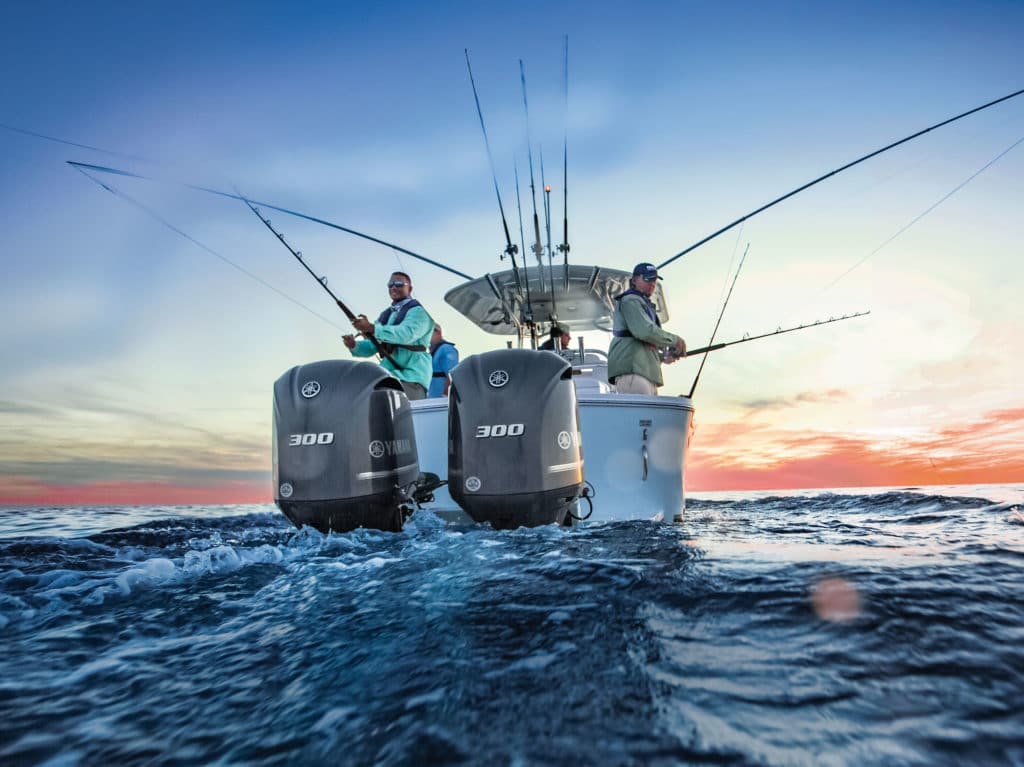
It’s rare to hear starters grinding or see clouds of blue smoke at coastal marinas and boat ramps these days.
That’s because there are very few carbureted outboards hanging off transoms. Granted, those simpler mechanical engines helped catch a lot of fish over the years, and many are still running strong. But even bulletproof designs wear out eventually. When that happens, you’re left with an important decision: rebuild, re-power with fuel-injected technology or buy a new boat. Before you decide, consider all the variables.
Should I Buy A New Outboard For My Boat
“The first thing I ask customers is if they really love their boat,” says Craig Freeman, the sales manager of Barrier Island Marine in Charleston, South Carolina. “If you don’t absolutely love it, it usually doesn’t make sense financially to re-power unless it’s a classic Whaler or something that’s been in the family for years. With common hulls, you just can’t get that added cost back out whenever you do sell it.”
Freeman has an extensive checklist he goes through with customers to evaluate the feasibility of repowering. One of the biggest considerations is the extra weight of a four-stroke engine compared with the original. That can impact the ability of the boat to self-bail, and often requires trim tabs to offset the stern sitting lower in the water on initial acceleration. Notched or lower transoms are also problematic with the added weight. Soft or rotted transoms will have to be repaired first. Fuel tanks on older boats should be thoroughly inspected. Batteries might need to be replaced to ensure proper voltage for computerized engines or they might have to be moved to offset the change in weight distribution.
“I never give a quote until I actually see the boat to figure out what else might be involved,” he says. “And I have turned down some repower requests. I don’t want the customer to be surprised or not be able to meet their expectations.”
New Outboard Engines Are Heavy
Brett Shields, president of Shields Marina in St. Marks, Florida, is another dealer who pays special attention to the weight factor. He sells Evinrude direct-injection two-stroke outboards, along with Honda, Yamaha and Suzuki four-strokes, plus Angler and Sundance boats.
“The biggest question is: Can a boat originally designed for a two-stroke handle more weight?” he says. “As four-strokes became more popular, builders changed hull designs accordingly. They added a couple of inches of gunwale height in order to raise the deck three inches to offset that extra weight. So that can be tricky with an older hull. An extra hundred pounds or more can really affect attitude and overall performance.”
Best Horsepower Options
Matching horsepower is another variable in the repower equation. Shields compares cubic inches rather than horsepower ratings when dialing in a replacement. He also takes into account performance. “I’ll typically suggest going to a 115-horsepower four-stroke on a boat with an original 90-horse two-stroke so the hole shots and top end are comparable. The midranges aren’t much different. I do feel the horsepower ratings (on the yellow safety placard) on most boats these days are too high. Think about it. Do you really need to go 70 miles per hour in a 22-foot boat?”
Boat owners who are considering replacing dual outboards have yet another decision to make: Stay with twins or go with a single, larger-horsepower engine. Both Freeman and Shields favor the single application.
“Today’s outboards are so much more dependable that I’m comfortable recommending a single 300 rather than twin 150s, even for going offshore,” Freeman explains. “The typical problems encountered now are ethanol-related fuel issues or hitting something. A single engine costs less initially, it has fewer parts, and it requires less maintenance. The major advantage of twins is better maneuverability, so if that’s critical, stay with dual outboards.”
Labor Costs to Rig an outboard
The labor costs of rigging a new engine vary. If no unexpected problems arise, removing the old engine and mounting the new one can usually be done in a day. A typical labor bill at Shields will run $450. However, material costs for fly-by-wire systems can add as much as $2,500. If the transom needs fiberglass work, the rigging tubes are full, new gauges and controls have to be mounted, or similar scenarios come up, the extra labor required adds up fast. Freeman likes his customers to leave the old engine on the boat so the original wires can be used to pull new harnesses.
So when’s the best time to buy if you do decide to repower? Anytime the manufacturers are running incentive programs, Freeman and Shields say. Historically, turnaround time is shorter in the winter when service departments are less busy. There are price differences between brands, so it pays to shop. Extended warranties are now mostly standard. If you do switch from the original manufacturer, plan on replacing all the gauges, controls and key switches, since the old ones are rarely compatible. And according to Shields, outboards are no longer designated by model years, so close-out bargains are a thing of the past too.
It’s a reassuring feeling to step aboard your pride and joy, turn the key and have the engine fire off without hesitation. But there are also circumstances when it might be better to say goodbye to an old friend. By approaching repowering objectively, you can see if it’s the right choice for you.
Boat Repower Checklist
- Crunch the numbers. Does a new engine(s) make financial sense?
- How’s the transom? Is it notched or does it show signs of rot?
- Does the boat have trim tabs? If not, plan on adding them.
- Inspect the fuel tank. Remove any old gas and refill tank before running the new engine.
- Calculate the weight differential.
- How old are the batteries? Will they need to be moved?
- Will the old propeller work?
- Plan to replace gauges, control boxes and key switches.
- Will wiring harnesses have to be replaced or added? How accessible are the rigging tubes?
- Plan for the unexpected when calculating labor costs.
- More: Boat Maintenance , How-To
- More How To

Recreational Fishing as a Catalyst for Conservation

Cast a Wide Net

Is Bigger Better?

When to Crank Like Crazy

EdgeWater 208CC Watchman
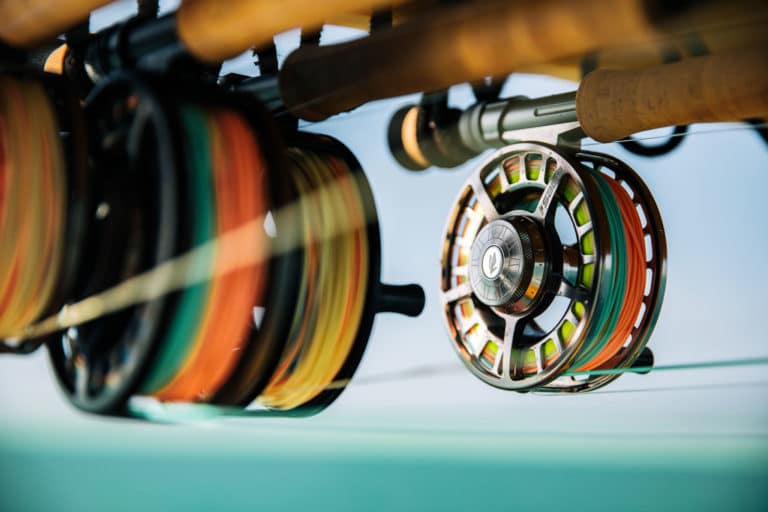
How Does a Fish Finder Work?

- Digital Edition
- Customer Service
- Privacy Policy
- Cruising World
- Sailing World
- Salt Water Sportsman
- Sport Fishing
- Wakeboarding
Authorised Suzuki Sales, Fitment & Service Centre
News: Boating
Newly repowered: check out the new outboards we fitted to these boats.

All our real and recent boat repowers (WATCH). Plus: Repower options, the boat repower calculator, what repowering a boat means and how to calculate your engine replacement cost
15 June 2019
What does it mean to repower your boat? Well, it’s basically putting new engines on, usually with more power and smarter tech. Fitting new outboards is one of the fastest, easiest and most cost-effective ways to give your boat more speed, performance, power and lower fuel costs. And there are loads of awesome options when it comes to a boat repower.
A repower is as easy as taking a look at the available outboards and then speaking to our sales guys and technicians in our Suzuki workshop , deciding on the repower option that’s best for your boat and your budget, and then booking your slot to have the new motors fitted. They’re brand new, fully tested, fitted and certified, plus you get a new warranty on the new outboards too.
Repowering your boats is probably one of the most satisfying ways to increase power on your boat without breaking the bank. See what the owners of these recently repowered boats have to say:
NEW BOAT REPOWERS
Jubal repower: upgrade to twin suzuki df100s.
More responsive, fuel savvy and a smoother ride. WATCH here:
New Suzuki DF100s on Ace Cat 555 Super stable steering. Lightest in its class. And so much more oomph. Check out the twin DF100s we fitted to Charles Wright's 5.5m Ace Cat. Now you're gonna do a lot of lekker deeper fishing, Charles and family! We'll show you more on this project soon. #GetNautiIn the meantime, discover the Suzuki DF100 here: https://nautitechsuzuki.com/outboards/df100b/ Posted by Nauti-Tech Suzuki on Monday, 2 September 2019
“You have to love the performance on these Suzuki four strokes, they’ve just got a bit more grunt in them. We took Jubal with the new motors out for the first time last Saturday and, boy, do they run well. I had to keep playing on that edge between too much and just having fun out on the water,” says Charles Wright, owner of the recently repowered Jubal .
5.5-Metre Ace Cat | Prev: 90hp 2 strokes | Repowered: 2 x New Suzuki DF100
ZEE KOETS REPOWER: UPGRADE TO TWO SUZUKI DF80S
Better performance for less fuel, more torque and superior after-sales service that seals the deal. WATCH:
Repower: DF80s on a 5-metre powered cat Instant acceleration and a finely tuned gear ratio. Doing a PDI on two new Suzuki DF80s on a 5.7-metre powered cat that loves going after tuna. Get the full sotry on the repower here: https://nautitechsuzuki.com/zee-koets/ #GetNauti Posted by Nauti-Tech Suzuki on Thursday, 6 June 2019
“I had two Suzuki 70s on before, and of course they were great motors, but you can feel the difference with the new Suzuki DF80s . I can now run at 1000rpm and get to the same speed I’d normally have to up to higher revs for. It definitely uses less fuel now, and the power configuration is just ideal for my boat,” says Emile Coetzee, owner of newly repowered Zee Koets .

UKWABELANA REPOWER: UPGRADE TO TWO SUZUKI DF325S
More power, less fuel and greatly improved functionality on this incredibly hard-working 13-metre marine research vessel. WATCH:
The best things come in twos. Dual louvre, dual prop, dual injection and the efficiency of a 300hp packed into the power of a 325. Check out the two DF325s we fitted to a 13-metre powered cat research vessel for the South African Institute for Aquatic Biodiversity, Makhanda, Eastern Cape recently. Read all about it here: https://nautitechsuzuki.com/ukwabelana/. Plus: More on the Suzuki DF325 here: https://nautitechsuzuki.com/outboards/df325a/ #GetNauti Posted by Nauti-Tech Suzuki on Thursday, 23 May 2019
“The new outboards are just awesome, the boat’s got more life now, so much more oomph. We used to have 300hp motors on, and getting the new Suzuki DF325s , well, that’s definitely a step up. It’s like the boat’s just come to life. That dual prop and better systems just mean she has more power now,” says Koos Smith, skipper of the newly repowered uKwabelana .

13-Metre Powered Cat | Prev: 300hp outboards | Repower: 2 x New Suzuki DF325
ABOUT BOAT REPOWERS
What are my repower options.
Well, you can start by checking out the available outboards . And then it’s always good to chat with sales guys and technicians because you want to be sure that you select the right outboards for your repower. You want to take your boat’s size and max engine weight into consideration, to be sure you select the right option. And then also ensure the steering and all systems are compatible. For the best advice, contact Nauti-Tech Suzuki here .

OUTBOARD REPOWER CALCULATOR
To get a general idea of how much power you need for your boat repower, you can use your boat’s weight as a guide. Convert your boat’s weigh into pounds, so a 2.2-ton boat becomes a 5000 pound. Normally, for a fairly average performing boat, you need about one horsepower (hp) minimum for every 25–40 pounds of weight (the range is wide because of all the different types and brands of boats you get).
If you take 5000 and divide it by 200, you get 25 pounds per horsepower. And, 5000 divided by 125 is 40. So you can get away with 125hp–200hp on that boat. But the lower that number is, the better your boat will perform. Try dividing 5000 by 300 and you’ll get 16.6, which is starting to become nice and fast. Divide it by 400 and you’re building a boat you’re gonna love.

Now, if you’re fitting two engines, remember that you’ll divide that horsepower by two. So, our super 400hp becomes two 200hp outboards. And then it becomes important to keep each individual outboard’s weight in mind. The two outboards together shouldn’t weigh more than your boat manufacturer’s max spec for your boat, so you’ll have to play with different configurations until you find the one that gives you the best power-to-weight ratio and works for your pocket. Fortunately, the technicians in our workshop will help you determine your best options.
Get the inside track on how to choose an outboard for your boat .
CALCULATING BOAT ENGINE REPLACEMENT COST
With outboard motors, it’s fairly simple. Your costs are the price of the new outboard(s), plus labour, fitment and testing. Now, it’s important to take into account the systems and steering, because those need to be compatible, otherwise, they’ll need to be replaced, which can add to the costs.

WHAT’S THE BEST OUTBOARD ON THE MARKET?
Now, we’re not going to tell you Suzuki is the best. Make up your mind for yourself: Suzuki is the most awarded outboards manufacturer in the world, having won 8 National Marine Manufacturers Awards (NMMA) for Innovation since 2003, plus two more awards in the 1990s. Check out the list of Suzuki awards .
Suzuki is currently the best-selling outboard in South Africa. Perhaps because we offer great value for money, excellent after-sales service, advanced tech like Suzuki Lean Burn that boosts your boat fuel economy and performance, and every Suzuki outboard also doubles as a trolling motor .

But, when it comes to repowering your boat, it’s all about what really works for you.
NEED A BOAT REPOWER?
Check out our Suzuki outboards and enquire about boat repowers .
Did you know we also do complete boat refurbs? Check out the before and after on Line-Breaker . And y ou can also browse pre-owned boats, outboards and accessories among our used boats .
Discover 7 BoatPro reasons to start boating .
And, it’s official: See why Suzuki is the No 1 Best-Selling Outboard .

PLUS: CHECK OUT THIS NEW LAUNCH
We’ve just launched Jan Hendrik Hattingh’s new CarryCat 900, the Carry On 2 .

Plus: What happens when you fit two 140s on a 6.7-metre boat specced for max 115? Find out with recently launched brand-new boat Seadation .
Also check out Robin Vermaak’s all-new CarryCat 760 game fisher, Piromero .

Plus: See all our custom-built new boats and all our favourite new launches under our full collective post on our boats .

THE PURSUIT OF AWESOME
Legend also has it that CarryCats and every other boat runs better under Suzuki power. Discover it for yourself among these Suzuki outboards .

BUILT FOR FISHING
Legend has it that it’s more fun fishing in a CarryCat. So tell your friends who might not know yet to check out the little-big CarryCat 670 , the next-level CarryCat 740 and the all-round great fisher CarryCat 760 .

Discover more specs, options and configurations for bass boats, riverboats and ski boats under our section on new boats .
BE THE FIRST TO KNOW
To ensure you always get first dibs on the latest deals and be the first to know about new, events and special offers by joining the Nauti-Tech Suzuki Facebook community and signing up for our newsletter .
— Need to refurbish, refit and revive your boat? Take a peek inside our award-winning Suzuki Marine workshop .
READY TO #GETNAUTI?
Here's where to get your Boat Week merch this week

Whether you’re participating in Saturday’s historic Port Huron-to-Mackinac Island Sailboat Race or visiting downtown to join in on the Boat Week fun, there are plenty of places to pick up a T-shirt or nautical souvenir to commemorate the occasion.
This year marks the second that MI Passion, 229 Huron Ave., has carried T-shirts with the Bayview logo for the Mackinac race — now with the emblem for its 100th anniversary.
But they’re going fast.
Boutique owner Anita Varty said she bought over 600 shirts, and by midday Thursday, had fewer than 200 left. Those include a women’s V-neck and a unisex shirt in white and gray colors. The race logo is shown enlarged on the back with a smaller version on the front chest of the shirts.
The shirts ranged in cost from $29.99 to $34.99. MI Passion was slated to be open until 8 p.m. Thursday, from 10 a.m. to 8 p.m. Friday, and 10 a.m. to 5 p.m. on Saturday.
Although they had plenty of other Michigan-made and nautical items, particularly themed for the lake and river, Varty said she was excited to be part of celebrating its 100th anniversary.
“The most exciting thing for me is seeing everybody out,” Varty said. “Like the energy downtown, I so looked forward to this week.”
Official Mackinac shirts can otherwise be purchased on Mackinac Island and through the Bayview Yacht Club in Detroit.
Port Huron Yacht club carrying 'Mac 2024' merch
The Port Huron Yacht Club’s women’s auxiliary is selling a variety of merchandise for both the club and specific items with a Mac 2024 logo, celebrating Port Huron’s spot as a start to the race but unaffiliated with the Bayview’s race merchandise.
Missy Smith, the auxiliary’s commodore, said the display of apparel would be out from 11 a.m. to 11 p.m. Thursday and Friday and Saturday morning with whatever items were left unsold. Typically, she said they only acquire enough to sell out, having first started selling items five weeks ago and on Wednesday for Boat Week.
“And it’s looking like this year we will probably sell out," she said. "… That’s what I’ve been telling everybody on their boats. ‘Oh, I like that shirt.’ If you want to get one, I would go now.”
As of midday Thursday, the merch included women’s V-neck T-shirts, regular unisex cotton T-shirts, and men’s long-sleeve sport tech shirts all in several colors, as well as hooded zip-up sweatshirts and tank tops. There were also yacht club sweatpants that didn’t have the Mac 2024 logo and sandals.
“And then, this year, we bought a new item, and it’s a T-shirt hoodie,” Smith said. “So, it’s T-shirt material, but it’s long-sleeved, and it has a hood. They’re really comfortable. And we have those in three colors.”
Prices for the local club’s merchandise, Smith said, ranged from $20 for tank tops to $60 for the zip-up sweatshirts with T-shirts falling in between.
Plenty of other stops with nautical-themed items to celebrate
Outside the official race shirt and local yacht club merch, a few other spots downtown had displays with boat-themed or items with anchors and other nautical symbols.
The Huron Lady II, for example, docked on the East Quay Street side of the Black River, had hats and T-shirts — the latter prompting you “take a ride” — on display for sale with small icons of the iconic cruise.
Elsewhere, the downtown shoe store District 43 also carried plenty of other items, such as through the Michigan Boat Company label.
“That’s our company,” said store owner Jorja Baldwin. “So, we have Michigan Boat Company. We have Motor City sun shirts, Michigan Boat Company tank tops, and an unofficial Michigan Boat Company Mackinac shirt.”
Baldwin said District 43 would be open from 2 to 6 p.m. Thursday and Friday and closed on Saturday.
When asked about their apparel, she said, “I like them all. It’s tank tops, T-shirts, sweatshirts because it’s Michigan. I feel like we have a little something for everyone. We have women’s tanks, and then, unisex things. The river mermaid because I like we can tie in the Black River and Lake Huron experiences.”
Contact reporter Jackie Smith at (810) 989-6270 or [email protected].

COMMENTS
The whole idea is to find the ideal balance. Simply replacing your 25- or 30-horsepower auxiliary engine with a 75-horsepower turbocharged model might sound good, but there's more to consider than pure muscle. First off, the 75-horsepower engine might simply be too heavy for your boat.
Yanmar, in their GM series for auxiliaries, have three control panels of varying sizes and options. Repowering a boat from a gasoline engine to diesel power needs extra consideration. Diesel engines of equivalent horsepower are usually physically larger than their gasoline counterparts. You may find, however, that the Atomic 4 in your boat has ...
Electric repower. Thread starter Guan; Start date Jul 15, 2021; Forums. Forums for All Owners. ... At least in my examination of this auxiliary motor concept for a sail boat. Likes: Mikem, ggrizzard and dLj. dLj. Mar 23, 2017 3,513 Belliure 41 Sailing back to the Chesapeake Jul 16, 2021 #5 Great summary by John. ...
Repower your boat because you plan to keep it and reap the benefits of the new engine yourself. The value of your boat will certainly increase with a new engine, but rarely enough to recoup the costs immediately if you are only repowering with the intent to sell. The same is generally true if you convert from gas to diesel. The boat's value
Repower with YANMAR 6LFs. Certified YANMAR dealer Motonáutica Balear, Mallorca, completes the installation of two YANMAR 6LF530 diesel engines on Magnum Marine 40 motorboat Adriana to raise performance to a new level. Repowering with a new, technologically advanced YANMAR engine will instantly breathe new life into your boat.
Discounts on fuel, transient slips, repairs and more at over 1,200 businesses. Deals on cruises, charters, car rentals, hotel stays and more…. All for only $25/year! Join Today. There are many considerations when starting a repower project, including some that are unrelated to the performance requirements of your boat.
Get 5 Years of Coverage for a Limited Time! Enjoy more performance, confidence and value this summer with 2 extra years of Mercury Product Protection Gold coverage in addition to the 3-year limited warranty when you buy a new Mercury 2.5-400hp outboard before August 31. Learn More.
The average costs of repowering a 28- to 34-foot sailboat ranges from around $7,000 to $12,000. This doesn't allow for V-drive transmissions, which always add to the labor cost because of the extra time involved. Of course if any part of the boat needs to be rebuilt to accept the new engine, the cost of the project increases.
Choosing the correct engine to repower your sailboat depends upon several different criteria. Utilize the Beta Marine experts that are ready to help. (252) 249-2473. Toll Free: (877) 227-2473 ... Instrument Panel Options; Alternator Options; Custom Engine Mounts; Saildrives. Saildrives (14 - 48 HP) Beta 14 Saildrive; Beta 16 Saildrive; Beta ...
Download Our Repower Guide for FREE! Repowering your boat is a major decision and there are several things to consider. We've collected some important information to help guide you through this decision and process. Connect with a certified YANMAR dealer or distributor when you are ready to make the next steps in your repower project ...
repower. Tim Barker. Many sailboats built two decades ago or earlier still have plenty of life left in them. But their engines may not. Grey Marine, Palmer, Perkins, Buhk, Universal, Pathfinder, Faryman—these once-common names in marine propulsion are all but gone from newer boats. Many of these engines were designed as truck or tractor ...
We Repower Boat Engines with Ease. Extend the life of your boat with an engine repower. Boats are designed to take a beating. A boat's engine is not. A well-designed hull can last for decades, well past when most engines begin to fade out. If you love your boat but the engine's a goner, repowering is an affordable option.
The need to be within these physical parameters will likely help you eliminate several options. This will make it easier to choose the right repower solution. Partner with the right company to repower your boat. Repowering a boat is easier said than done. There are lots of parameters covered above to work with while repowering a boat.
While Elco has offered modern electric-propelled launches since 1987 and inboard repower options since 2009, its newest inboard motors are one-third smaller and half the weight of previous models, illustrating industry trends. Torqeedo and, recently, ePropulsion also offer powerful, light inboard motors for either repower or OEM installation.
Repower with the MCX with closed cooling. I've seen this on E-Bay with the V-Drive transmission for about $13k. I think the tranny represents about $2-3k of that price. Michigan Motors and Great Lakes Skipper are two outfits that sell motors, etc. I've also seen the 6.0 liter going for about $10k. Again, these are the high end options and would ...
So know the price range for the boat, in excellent condition, before proceeding with a repower. When estimating any repower, bulk up the budget beyond the cost of the engine and installation. On inboard engines you must consider replacing old engine mounts, wiring, controls, exhaust systems, fuel tanks, transmissions, stuffing boxes, cutlass ...
Boat Repower Options and Considerations Repowering your boat is an opportunity to make necessary changes, though not every change will be beneficial to the way your boat runs. Repowering a boat is more than just installing a new engine — there are numerous aspects and different options for each aspect that you should consider.
Jay Rickles. Jul 13, 2001. #12. re engine. Don't know about an outboard option, but I had to put a new engine in my 1989 Catalina 30. I had a Universal 23hp and the replacement was a Universal 27hp. I had to redo some of the exhaust fitings to the water lock as the engine as been redesigned as is usually the case on the older boats.
The labor costs of rigging a new engine vary. If no unexpected problems arise, removing the old engine and mounting the new one can usually be done in a day. A typical labor bill at Shields will run $450. However, material costs for fly-by-wire systems can add as much as $2,500. If the transom needs fiberglass work, the rigging tubes are full ...
Normally, for a fairly average performing boat, you need about one horsepower (hp) minimum for every 25-40 pounds of weight (the range is wide because of all the different types and brands of boats you get). If you take 5000 and divide it by 200, you get 25 pounds per horsepower. And, 5000 divided by 125 is 40.
Even with its 4.6-liter displacement and V-8 configuration, the 300-hp Mercury Verado manages to keep weight competitive and deliver low-end torque. 4. Power Surge. For many owners, the temptation to go up in power becomes part of the repower decision. First, check the boat's capacity plate for the rated horsepower.
Exceeding that limit can be dangerous and may cause you to lose your insurance coverage. If your boat doesn't have a placard, you have to do the math. A general rule of thumb is to plan for one horsepower per 20-40 pounds of boat weight. So, if your boat weighs 6,000 pounds, you'll be looking at 150-300 hp combined power.
The shirts ranged in cost from $29.99 to $34.99. MI Passion was slated to be open until 8 p.m. Thursday, from 10 a.m. to 8 p.m. Friday, and 10 a.m. to 5 p.m. on Saturday.